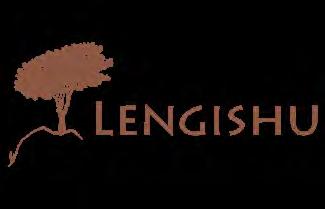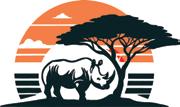

Conservation

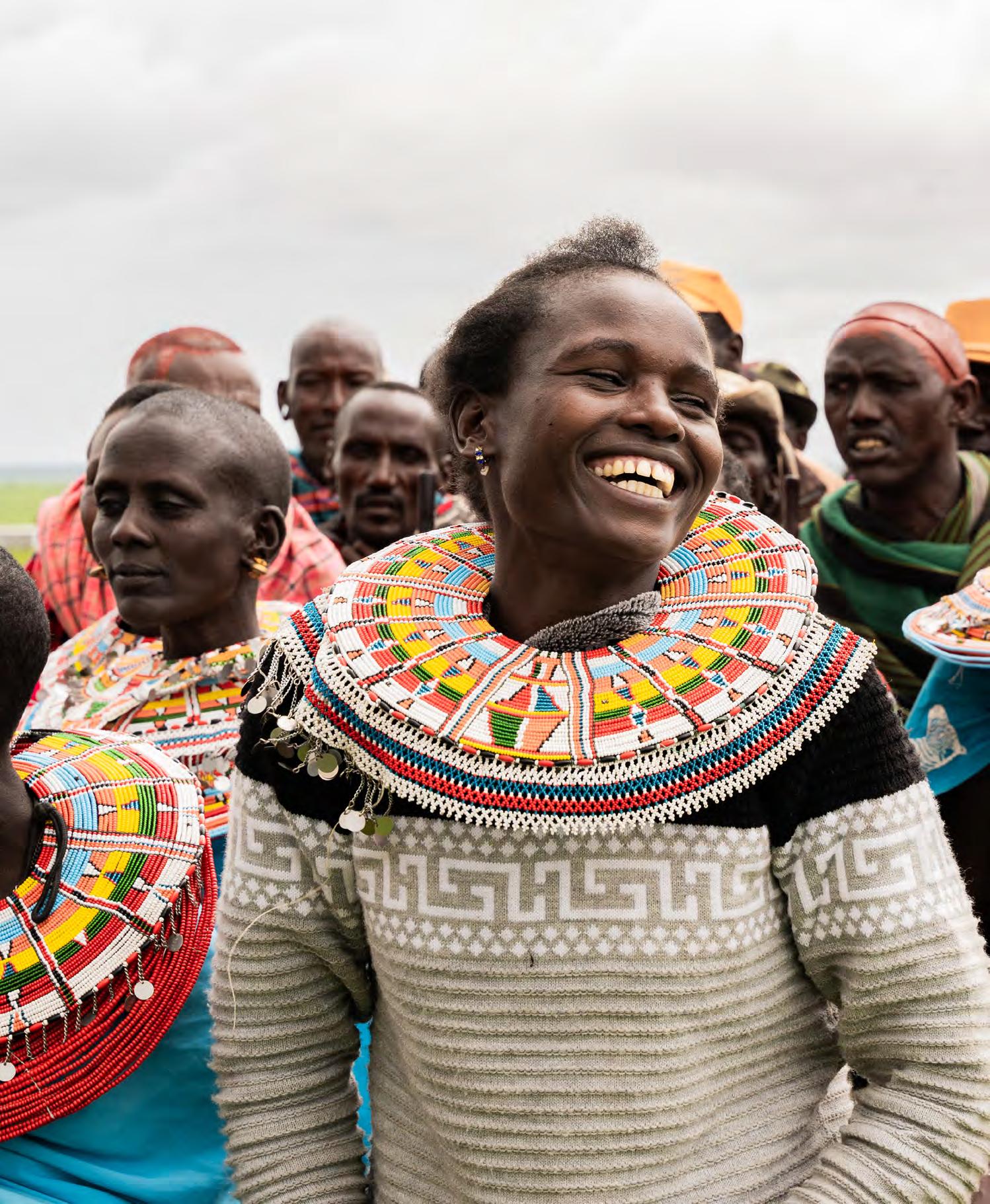







This publication is the collective effort of The Long Run’s members based in Kenya. By working together, the lodges hope to portray what holistic sustainability looks like, why it’s important, and guide travellers towards better choices. Sustainability and conservation achievements would be impossible without the relentless support and commitment of employees and communities. This is a celebration of The Long Run’s many 4C heroes.
The Long Run is a global membership organisation sitting at the intersection of conservation and tourism. Founded by Jochen Zeitz (owner of Segera), it is now hosted by Preferred by Nature. Through technical support, training, and collaboration, the organisation guides lodges and privately protected areas towards positive impact. It does this via the 4C framework — adopting a holistic balance of Conservation, Community, Culture and Commerce.
A benchmark of success for Long Run members is the prestigious Global Ecosphere Retreat® (GER) standard, which is recognised by the Global Sustainable Tourism Council. To achieve GER®, Long Run members must meet multiple indicators across the 4Cs and pass an external assessment. It is widely considered the most rigorous sustainability standard in the travel industry.
Collectively, Long Run members safeguard over 23 million acres of ecosystems, protect more than 400 endangered species, and improve the lives of 750,000 people.

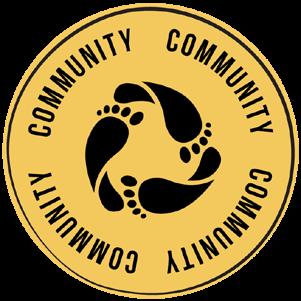
The Long Run’s 4C Framework balances Conservation, Community, Culture and Commerce to ensure lodges and privately protected areas embrace holistic sustainability. Just like in nature, a balance is essential to keep each component healthy.

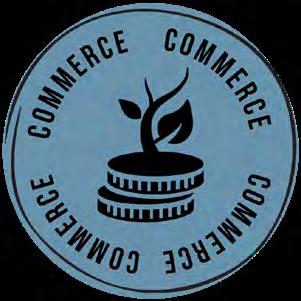
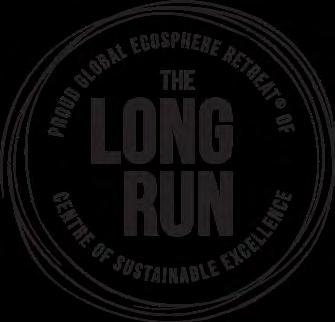
Thriving marine and land ecosystems and biodiversity are integral to the survival of people and our planet but drastically under threat. Conservation is safeguarding and regenerating this biodiversity to support local people and global needs.
Enhancing community well-being is a fundamental obligation of all, and it is the right of every person to have their basic needs met. Conservation initiatives must be socially sustainable and respond to local needs to succeed in the long-term.
Our world is richer for its cultural diversity. Celebrating commonality is what nurtures understanding, and respecting difference is how we grow. To overcome the climate and biodiversity crisis, we need to listen to, include, and champion all cultures and peoples for the common good.
Uncontrolled commerce has negative impacts. Conducted holistically and sustainably, however, business can improve the health of the planet and people. Conservation initiatives need to be financially sustainable and resilient for local communities and destinations to succeed in perpetuity.
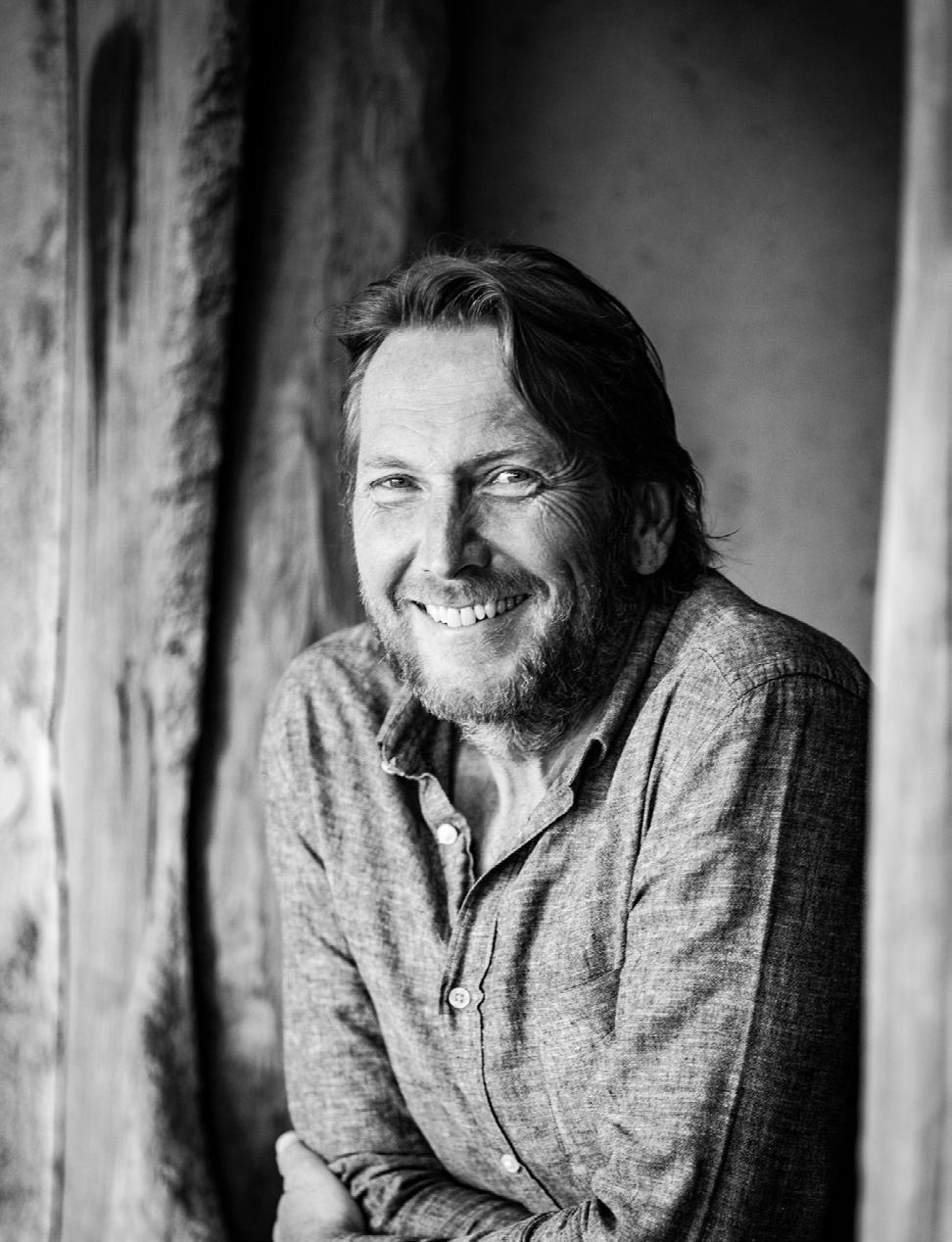 Jochen Zeitz
Jochen Zeitz
Business can’t be sustainable if it only takes away from nature and people, to me the definition of profit is profit of society and profit of nature and it can’t be at the expense of any of the 4Cs and that is why I advocate a different approach of business.
Jochen Zeitz is widely recognized as a pioneering leader in conservation and sustainable business. At just 30 years of age, he became the CEO and Chairman of the nearly bankrupt sportswear manufacturer PUMA. After 18 years, sales had grown to 4 billion USD and the share price had increased by 4,000 percent.
At PUMA, Zeitz conceived the ground-breaking Environmental Profit and Loss account (E P & L) putting a monetary value on environmental impacts across a business’ supply chain. The move inspired a new internationally recognised environmentally and socially conscious business model. After buying Segera, a degraded cattle ranch in Kenya’s Laikipia, Zeitz applied the same principles of sustainable business to drive community and conservation initiatives. This was the basis of The Long Run.
“The Long Run began in 2009 as an initiative of the ZEITZ foundation. We wanted to share our sustainable practices and the 4C philosophy, which means achieving true sustainability through a holistic balance of Conservation, Community, Culture, and Commerce. We were successfully introducing this vision in Laikipia but wanted to take it to a global level.” says Zeitz.
Zeitz found a few other places in the world that intuitively applied the same holistic concept, and they came together as eight founding members of The Long Run. It was through this collaboration that the organization grew and developed to become an independent non-profit organization in 2015 and a UK-registered charity in 2017.
“Our vision is of a world in which business, nature, and people work harmoniously together for a sustainable future. We promote this by supporting, connecting, and inspiring nature-based businesses to excel in the highest standards of sustainability; how to achieve profit at the same time as encouraging healthy biodiversity, productive ecosystems, and prosperous communities,” says Zeitz.
“The great thing about the 4Cs is that it’s not a cookie-cutter approach. It can be adapted and applied in different parts of the world. The process and approach are very similar, but how you break it down and deliver it requires local context and initiative. The Long Run members include a huge range of projects — everything from wetland restoration and species reintroductions to marine protected areas and regenerative agriculture,” he continues.
Today, The Long Run is one of the world’s leading sustainability initiatives led by nature-based businesses. Collectively, members safeguard over 23.5 million acres of nature worldwide, improve the lives of 750,000 people, and protect over 30,000 species. “It is about empowering people — giving guidance on how to do it and letting them come up with their implementation. Essentially, it is a global approach with localized adaptation mechanisms,” says Zeitz.
Now the CEO and Chairman of Harley-Davidson and overseeing the Rewire and Hardwire, the company’s ambitious strategic plan to
bring long-term growth, Zeitz says that you cannot be successful without community whether employees, neighbours, or stakeholders.
“You cannot just come to a place and say you are conserving wildlife or land by putting a big fence around it. You must be inclusive and create win-win situations for people and ecosystems to thrive. That’s why it is so important to have a holistic approach where the communities are an integral part of success, creating conservation economies that preserve nature but also improve the livelihoods,” says Zeitz.
Zeitz is curious about different cultures and started traveling when he was a young man. He loves the diversity of culture, people, food, art, and history, and these are the things that always excite him.
“Coming to Kenya changed my life in 1989. I fell in love with the diversity and decided to make it my home. Community is not homogeneous; if you look at Segera there are different cultures embedded in local communities and that is why it became a very important ‘C’ in the 4Cs. Cultural diversity needs to be celebrated across the world,” Zeitz explains.
In 2021, The Long Run joined forces with Preferred by Nature, a fellow non-profit organisation supporting better land management and business practices that benefit people, climate, and nature in six continents and over 100 countries. Through this partnership, it hopes to become the largest global association of PPAs (Private Protected Areas).
Zeitz believes that the COVID-19 pandemic and people’s enhanced awareness about the fragility of nature and the future will lead to a more conscious travel movement. Travelers, in Zeitz’s opinion, will hopefully have a new focus. A yearning for more space, a healthy environment, sense of connection, will make tourists less likely to be irresponsible or jump from place to place.
Zeitz thinks that business needs to step up and solve some of the problems it has created. His definition of profit is ‘profit of society and profit of nature’; it should never be at the expense of any of the 4Cs. “Business is well placed to solve some big problems. We can no longer afford to take from nature without being able to give back. We need to take a planetary view to tackle the climate and biodiversity crisis,” explains Zeitz.
When Zeitz started out in the corporate world, businesses rarely considered the UN’s Sustainable Development Goals or explored positive impact. But that’s changing. Business leaders increasingly recognise that if we don’t work together to fix global environmental and social issues, the damage may be irreversible.
“All of us have a chance to make a difference in our little way. Having a consciousness and awareness of the problems that exist will automatically help us to live more sustainable lives and we have the opportunity to change for the better,” concludes Zeitz. And for this reason, Jochen co-founded The B Team with Sir Richard Branson.
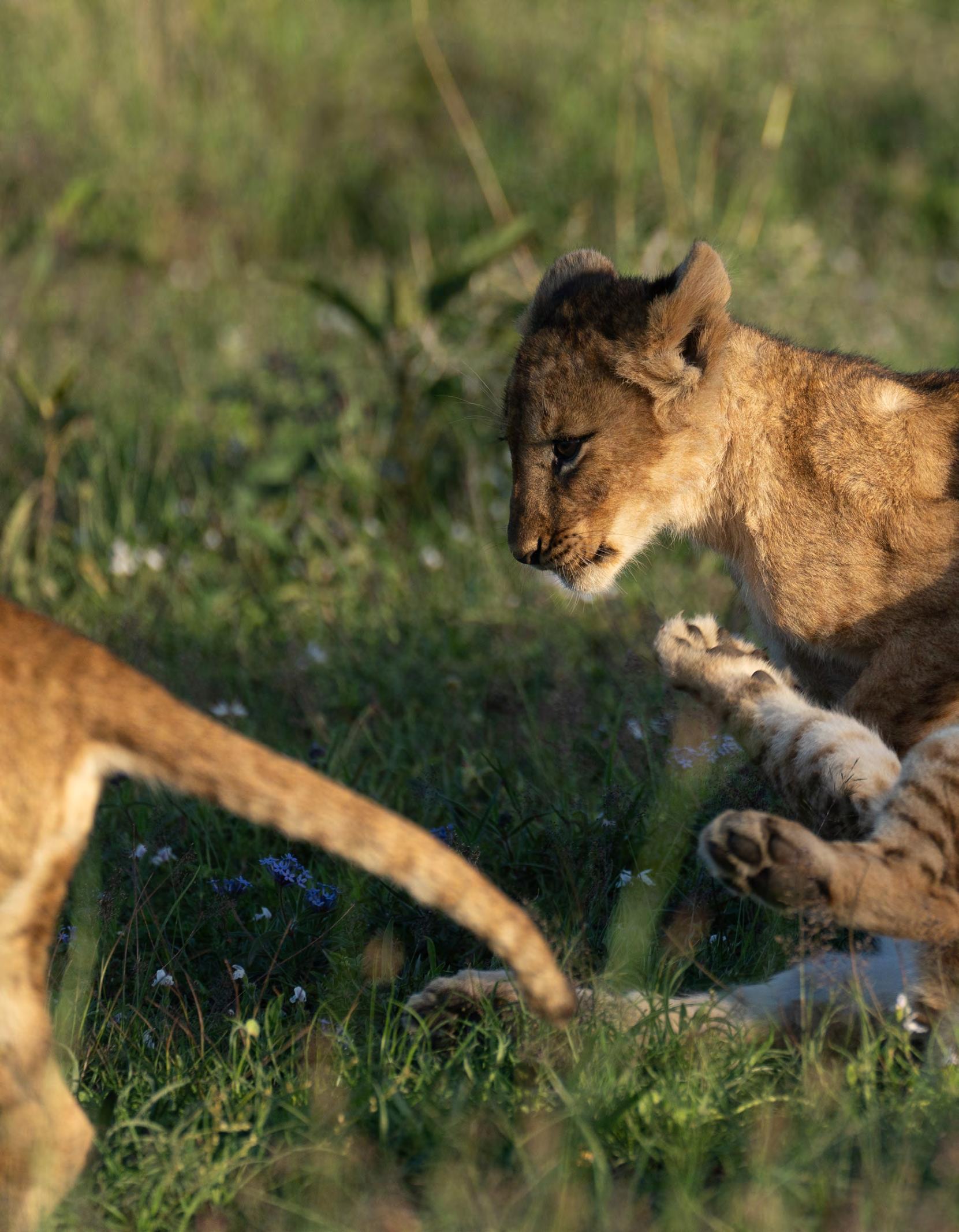

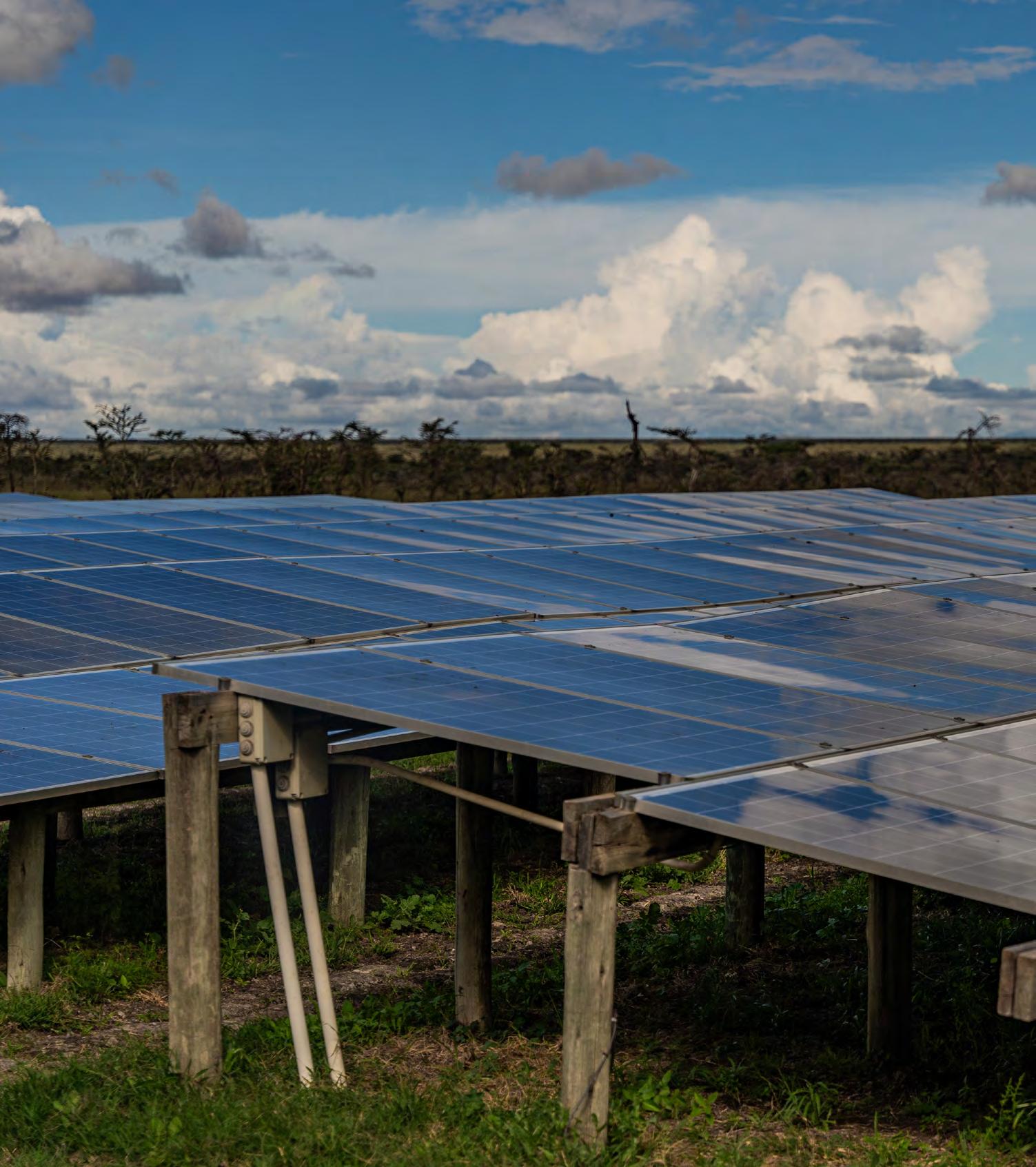
As a Global Ecosphere Retreats® (GER) member of The Long Run, Segera is committed to ensuring every aspect of the conservancy has a light footprint, which strengthens its mission to achieve long-lasting impact and sustainability

As our planet is degrading due to pollution and global warming, there has never been a more urgent need to revive damaged ecosystems than now. At Segera, its dedicated mission revolves around sustainable living and a harmonious relationship with nature. This commitment is evident in sustainable building practices, solar installations, rain-catchment systems, and responsible management of water resources. Additionally, proper treatment and reuse of grey water are prioritised, alongside sustainable collection and disposal methods for solid waste.
With International tourism heading back to pre-pandemic levels, and double the number of people travelling so far in 2023 than in the same period last year, the industry is still at risk of being a big contributor to the global plastic pollution crisis. One important way to curb this is phasing out single-use plastics. Guests are provided with bath amenities in refillable pumps, takeaway meals are packaged in boxes or biodegradable paper, as well as onsite purification of drinking water which is served in reusable glass bottles.
Energy, being at the heart of the climate challenge, is also key to the solution. Transition to cleaner and renewable forms of energy such as solar is critical to protecting humans, wildlife, and ecosystems. The rooms are not only luxuriously cozy, but also eco-friendly thanks to solar energy. Segera takes great pride in creating the perfect blend of luxury and eco-consciousness to guarantee minimal environmental impact.
Minimisation of waste as well as remanufacturing and recycling waste into usable products is a critical contribution humanity can make to reduce its impact on the natural world. The lifecycle of waste- generation, collection, and disposal- is informed by their mission to create a sustainable, ecologically and socially responsible retreat. Having properly labeled waste bins at collection stations around the retreat is the first step toward sorting solid waste.
Every morning, bins are emptied and cleaned before transferring the waste into a central collection station within the conservancy. Organic waste is composted in on-site gardens while the rest- paper, plastic, metal, and PPE is later transferred to a community enterprise that empowers waste picker livelihoods through the collection, sorting, and recycling of generated waste.
Segera partners with Chumeplasoles, a waste collection and sorting station located in Nanyuki’s Majengo slum area. Founded 8 years ago by George Mwangi, the establishment has truly transformed the face of Majengo slums which was previously dotted with trash and heaped chunks of waste. George and his team, who are spread out across Nanyuki, collect recyclable waste such as paper, cartons, metal, plastic, bottles, glass, and even bones. The team also incinerates PPE and other bio-hazardous waste that comes to them.
Many other private firms as well as the county government bring their recyclable waste here, which Chumeplasoles sells to notable recycling companies around Kenya. George also works closely with homeless youth and other disadvantaged groups who act as waste pickers to earn a livelihood. Every month, the team at Chumeplasoles participates in an act of charity and has been monumental in supporting street families and children’s homes around Nanyuki.
The consequences of doing little or even nothing to address waste management can be very costly to our eco-sphere. By reducing waste, avoiding irresponsible waste-discarding methods as well as recycling waste into usable products, we are a step further into expanding the positive impacts on the health of the planet and the well-being of people.
Rethinking habits is not a matter of change at one hotel or even in one industry. Instead, it requires the support of every stakeholder, from governments, policymakers, business owners and consumers. This contributes to a healthy, liveable planet today and for generations to come.

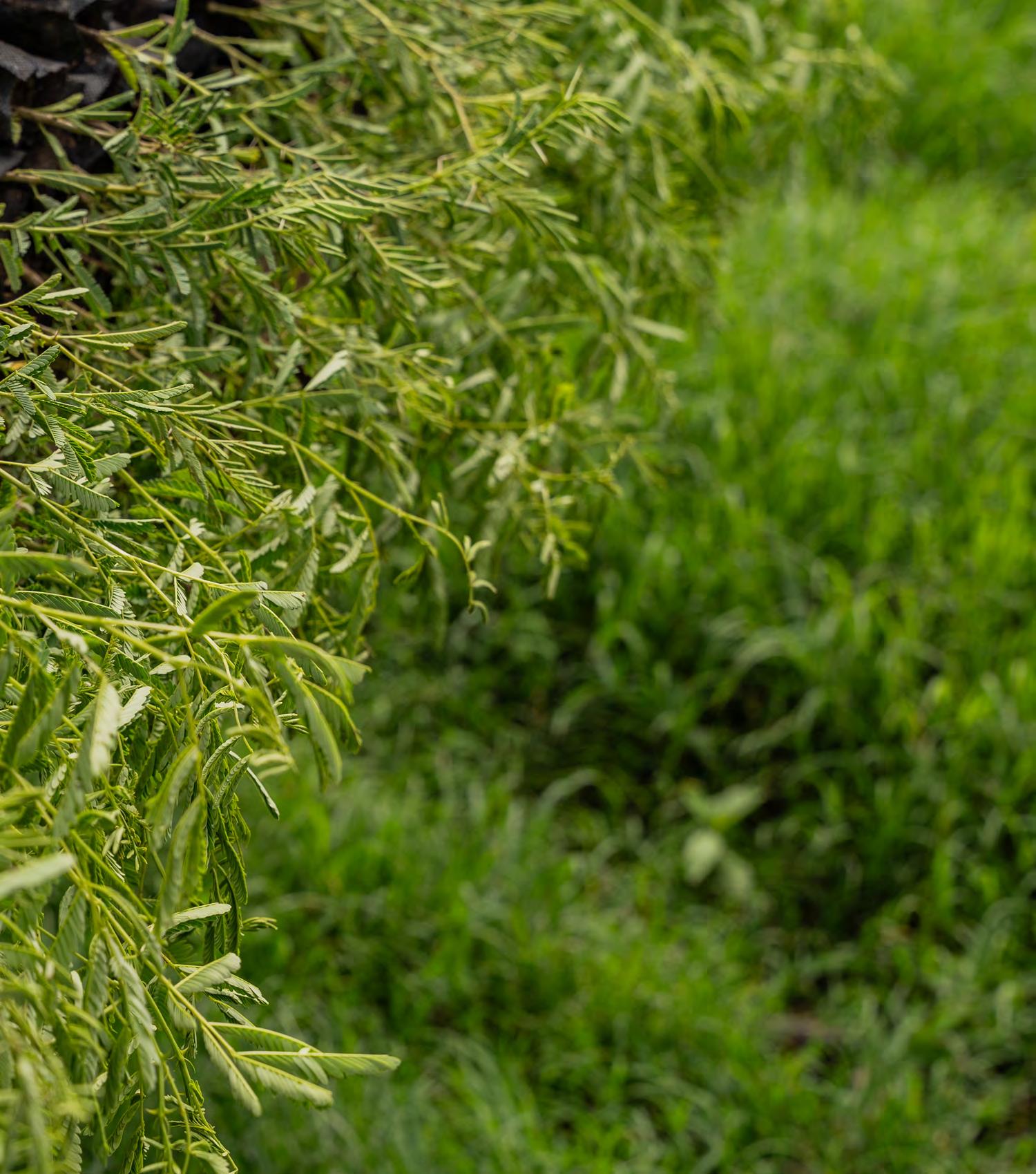
Over the last decade, Segera has been a catalyst for change by engaging in vital conservation projects that have brought back to life 50,000 acres of degraded land, which is now teeming with thriving wildlife populations and reforested with hundreds of thousands of newly planted trees.

Trees play an integral role in our planet. They are the silent warriors that not only dot our landscapes with shade but also hold our ecosystems in place. A 2020 report from UNEP and the Food and Agriculture Organization found that, in the past 30 years, 420 million hectares of forest had been lost through conversion to other land uses (which is larger than the size of India), and that another 100 million hectares are at risk. The long-term effects of deforestation have a critically negative impact on the ecosystem, affecting not only plant and animal life but also the well-being of human communities who rely on the fertility of the land for their prosperity.
As efforts to restore forest cover gain full momentum around the world, we embarked on an initiative to replenish deforested land here on Segera through the Tree of Life Reforestation project. Spearheaded by the ZEITZ foundation and with support from our guests and partners, we aim to grow three million trees by 2030. This will be East Africa’s largest reforestation project on a private conservancy.
The first phase of the planted forest in 2020 formed the shape of a rhino, which highlights the importance of conservation and biodiversity. Towards the close of 2023, over 800,000 seedlings had been planted, a step closer to the initial goal of one million trees.
In consultation with local experts, six different indigenous tree species were chosen to maximize the long-term success of the ‘Tree of Life’ forest: Acacia abyssinica, Acacia kirkii, Acacia polyacantha, Acacia seyal, Acacia xanthophloea, Acacia mellifera. Planting these trees is essential in replenishing deforested land. They create a rich habitat for biodiversity, enhance topsoil fertility, reduce erosion, and help to offset carbon emissions.
“In recent years we have seen an alarming amount of climate change, biodiversity loss, and natural disasters. Sustainability is no longer about doing less harm, it’s about actively doing more good. Planting trees is such a simple way to give back to our planet (that everyone can get involved in, on a large or small scale) – not just to offset carbon emissions, but to create a safe, long-term wildlife habitat that is critical for the future survival of biodiversity.”
Jochen Zeitz, Founder, ZEITZ foundation
An exciting aspect of this initiative is the force running behind its implementation. More than 60 women drawn from the greater Segera community are involved in various aspects of this project. From soil preparation to bag-filling, seed scarification, planting, and initial watering of the seedlings, these amazing women have found the means to earn an independent income and support their families.
Florence, a mother of 7, joined the program in 2020 and is now enjoying a full-time contract. “I can now comfortably cater for my children’s education as well as household needs,” she says. Esther Imaret, a widowed mother of 5, shares the same sentiments. “I am happy I can now take my children back to school and they can now afford to eat all their meals.” Since her employment, she has gained a great deal of conservation knowledge and shares it with her children and community. Eunice Ewaka, also employed by the initiative, mentions that she has since stopped cutting down trees to use for firewood as she can now afford alternative methods of fuel. The women have now formed a self-help group which has gone a long way in empowering them and their communities. They have become conservation champions who safeguard and plant more trees in their communities.
Engaging in vital conservation projects such as reforestation strengthens our mission to achieve long-lasting positive impact and sustainability. At only $1 per tree, every donation makes a real difference towards protecting Kenya’s biodiversity for the future, and everyone can take part.

Guests can take part in a run around the Rhino forest! Dubbed the “Rhino Run”, this fitness challenge is an opportunity to run in the incredible wild, while raising awareness on the incredible Tree of Life Reforestation Project.
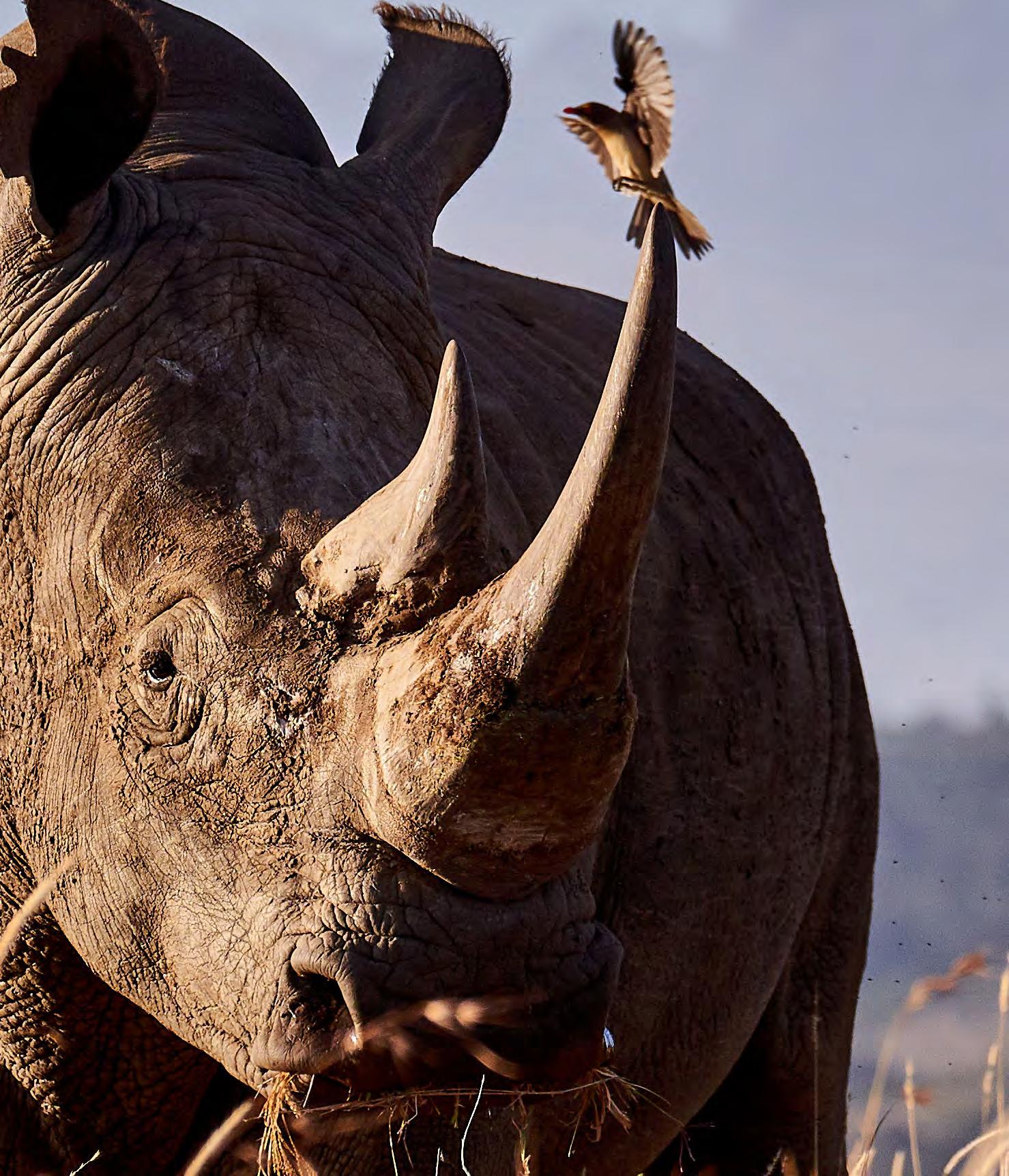
or two decades, Segera has engaged in intense biodiversity restoration, long-term community initiatives, and sustainable conservation efforts. This has led to remarkable outcomes, with the expansive 50,000-acre plains now teeming with diverse wildlife.
Witnessing the thriving big cat populations and regularly spotting other majestic animals during game drives is a testament to the plentiful wildlife spread out across the conservancy.
And now the ZEITZ foundation is launching its most ambitious project yet. In collaboration with the Kenya Wildlife Service, Segera plans to return the critically endangered rhino to one of its ancestral natural habitats. The creation of a Rhino Sanctuary on Segera Conservancy and beyond serves as a vital component in the long-term strategy towards the restoration of Kenya’s rhino population and biodiversity.
With the global Rhino population being decimated, their survival now hangs in the balance. Here in Kenya, the Black Rhino population has suffered a devastating decline of 98% within 15 years due to intense poaching and habitat loss. 80% of the world’s rhino population is now located in Kenya, and with the launch of this bold new initiative, we are hoping to finally bring rhinos home to Segera.
Central Laikipia is perfect rhino country and was once home to thousands of rhinos before the species was decimated.
Positioned at the geographical heart of Kenya, the Segera Rhino Sanctuary will become a vital gateway to a large-scale initiative to create an interconnected area of private and community conservancies, government parks and formerly abandoned lands to become one of the largest rhino sanctuaries in the world as part of the Kenya Rhino Range Expansion Plan (KRRE), where rhinos can safely return to Central Kenya’s vast savannahs.
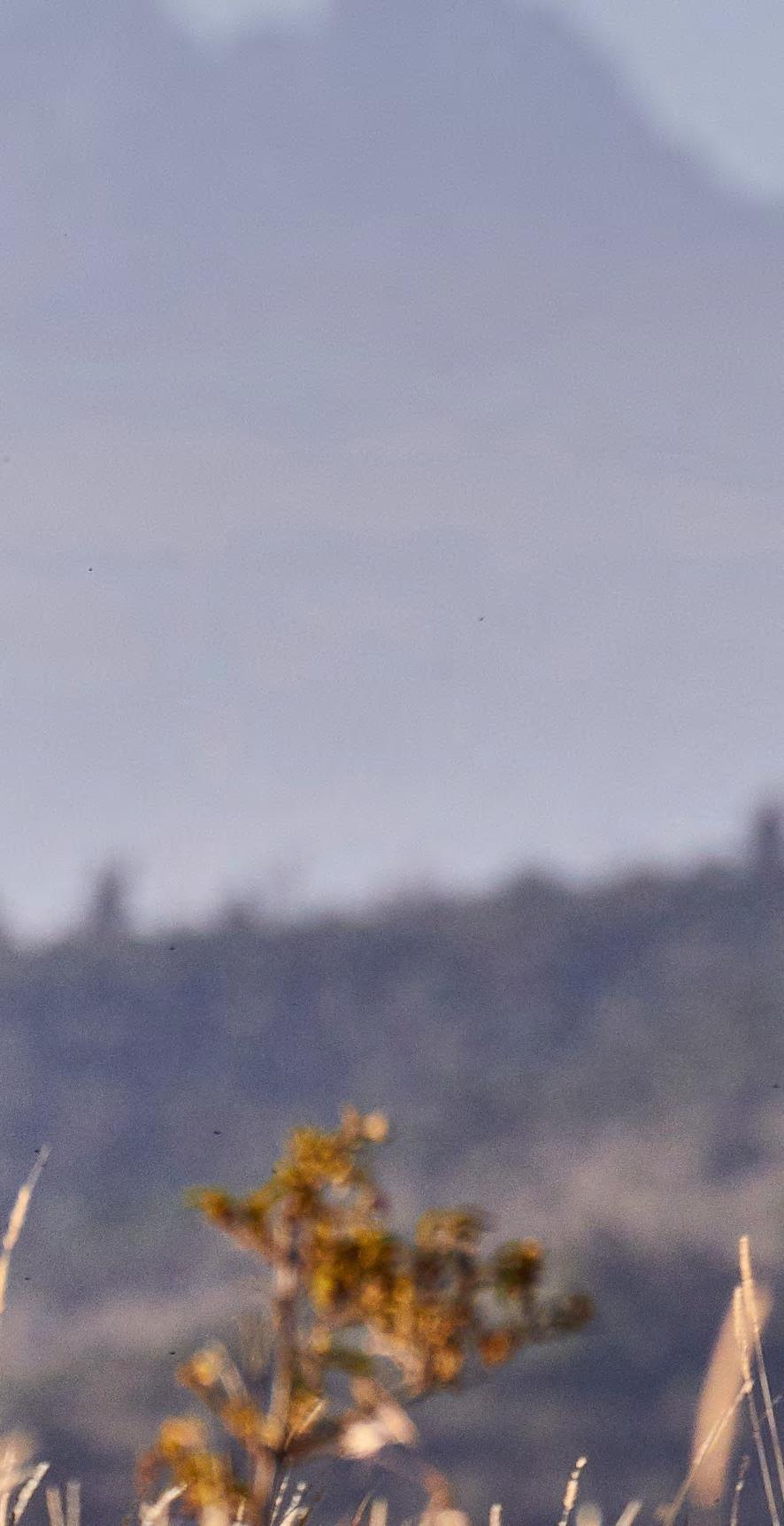
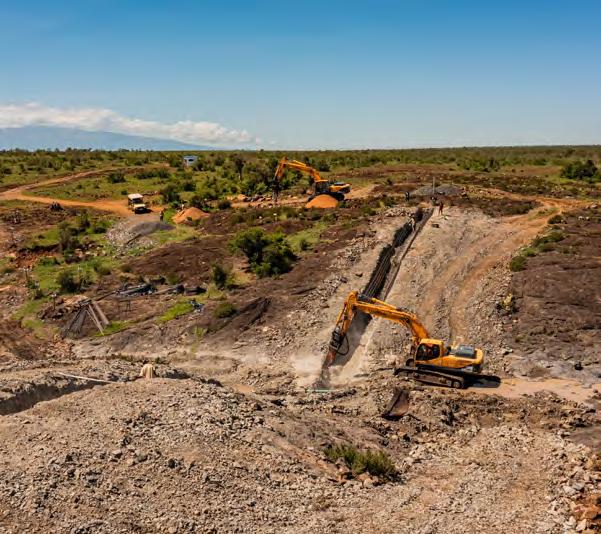
With Climate Change affecting seasonal rain patterns and increasing the intensity of drought periods, it has become critical to ensure a safe and consistent source of water.
To ensure long-term water supply for biodiversity, we began construction of a large water dam along the Segera River with a potential capacity of 603,107 cubic meters, making it possibly the largest in East Africa. This dam will also be crucial in supporting the rhino population that will be protected at the proposed sanctuary, other wildlife, and the greater ecosystem of Segera.
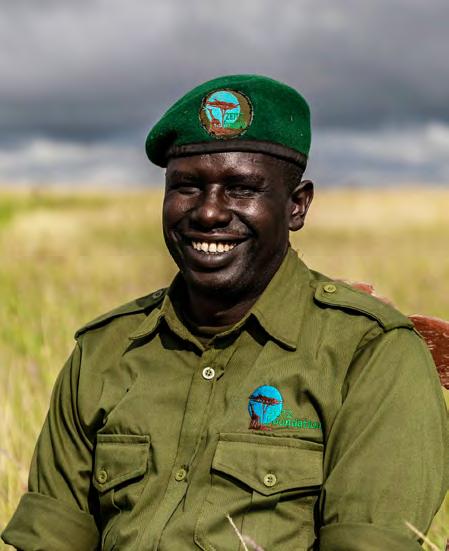

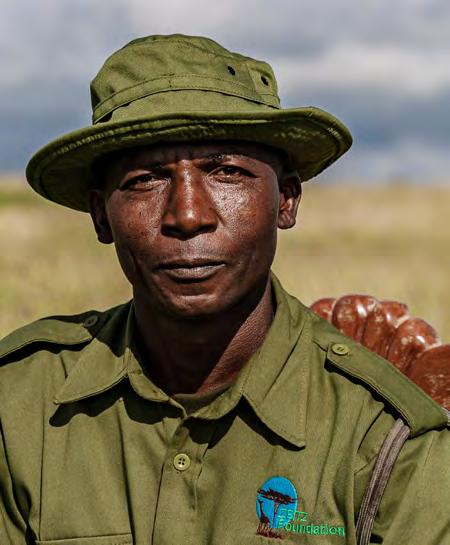
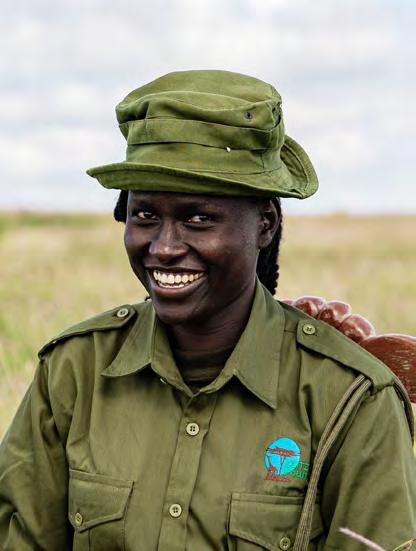

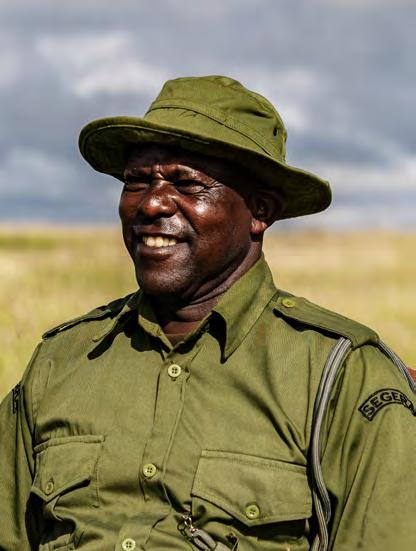
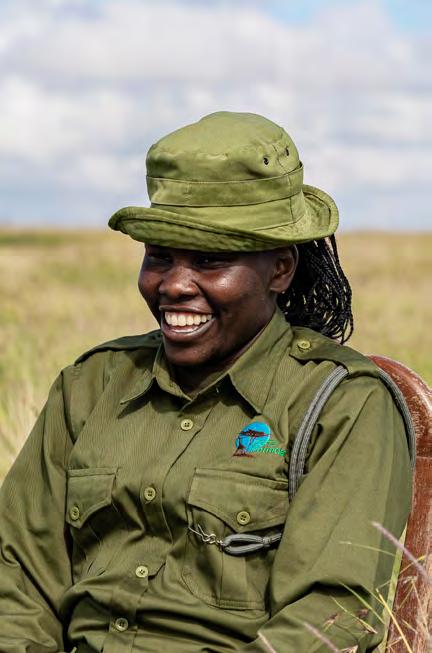
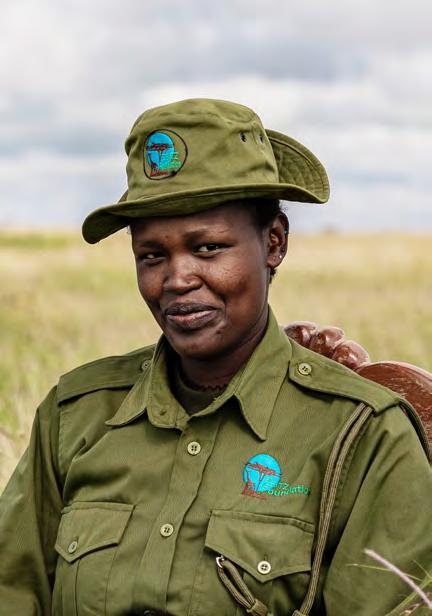
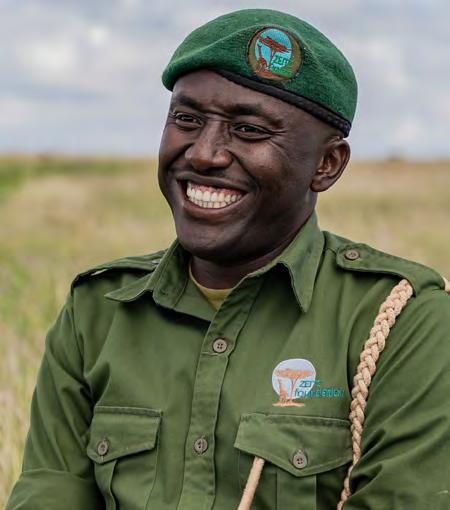

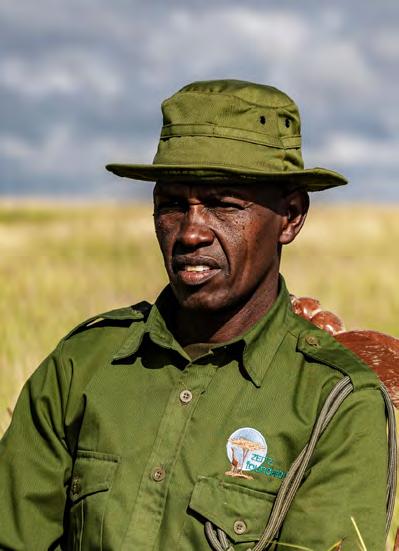
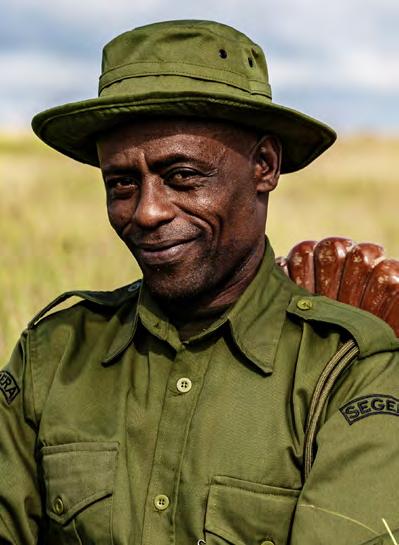
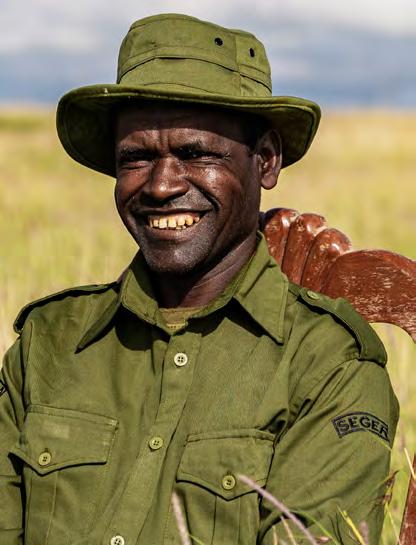

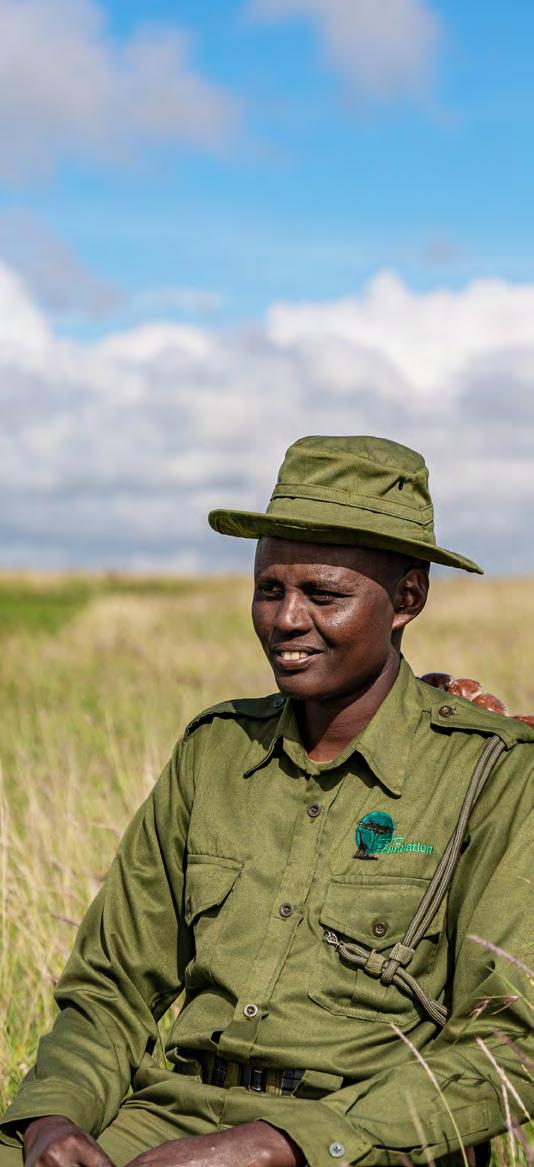
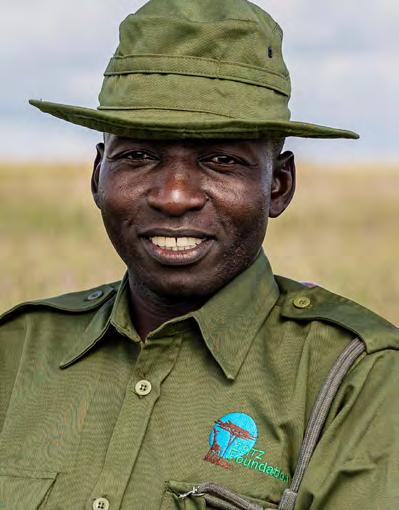

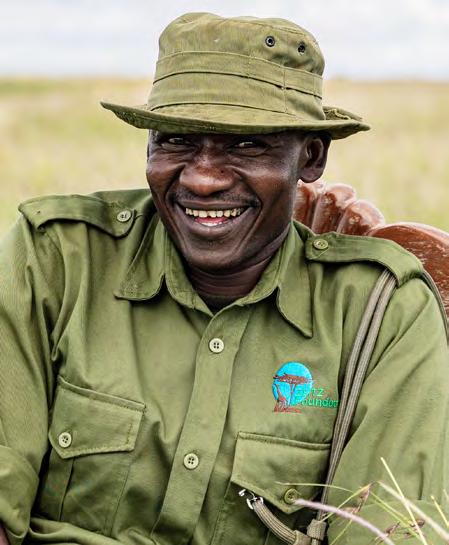
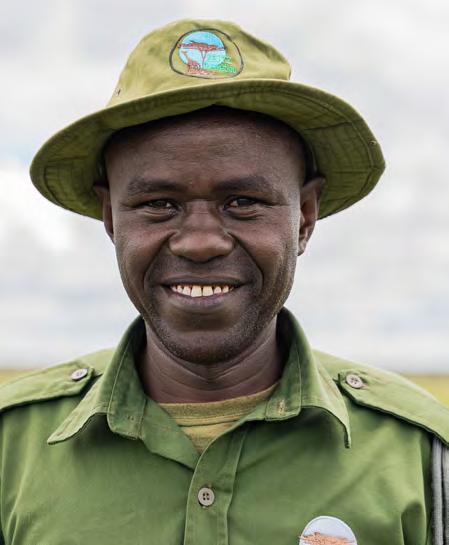
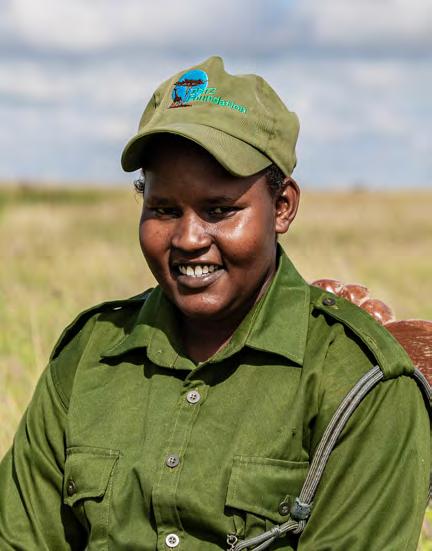
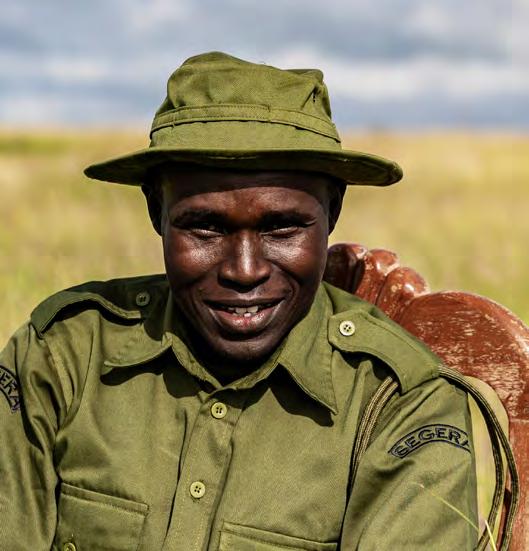
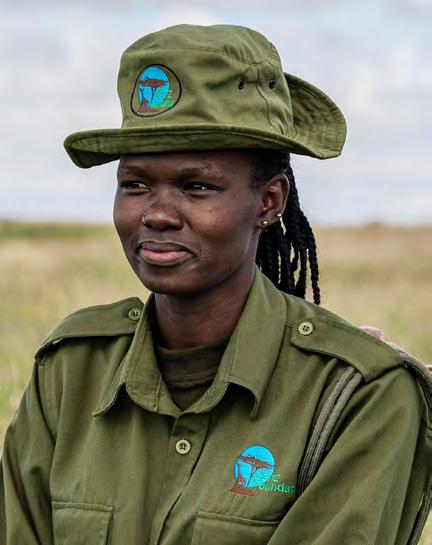
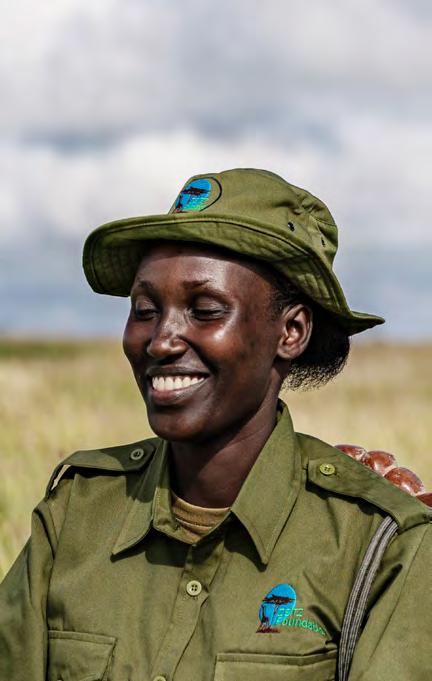
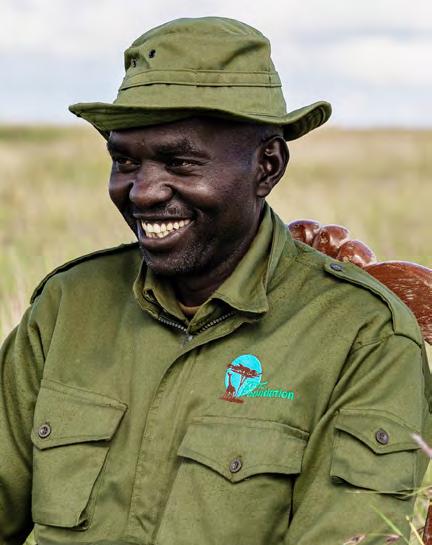
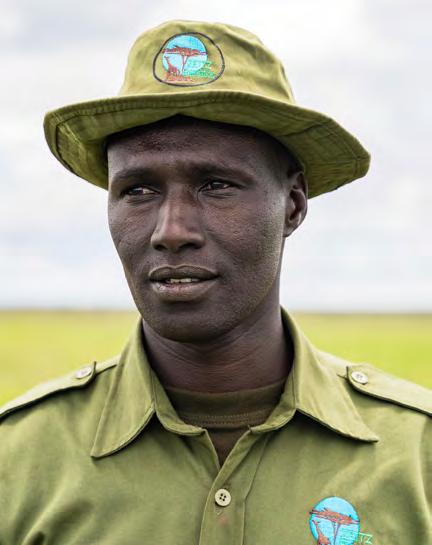
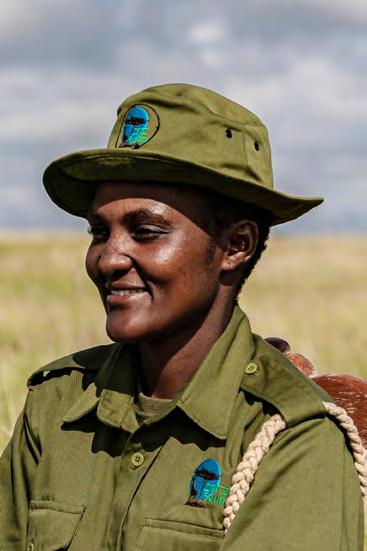
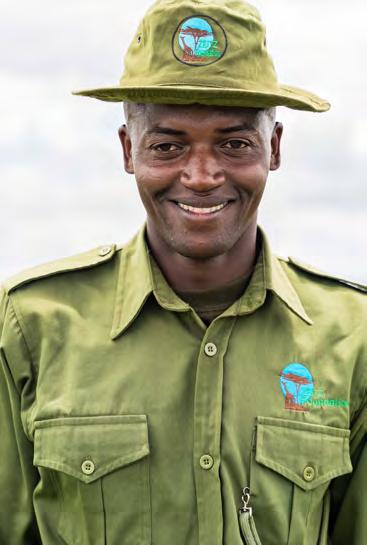
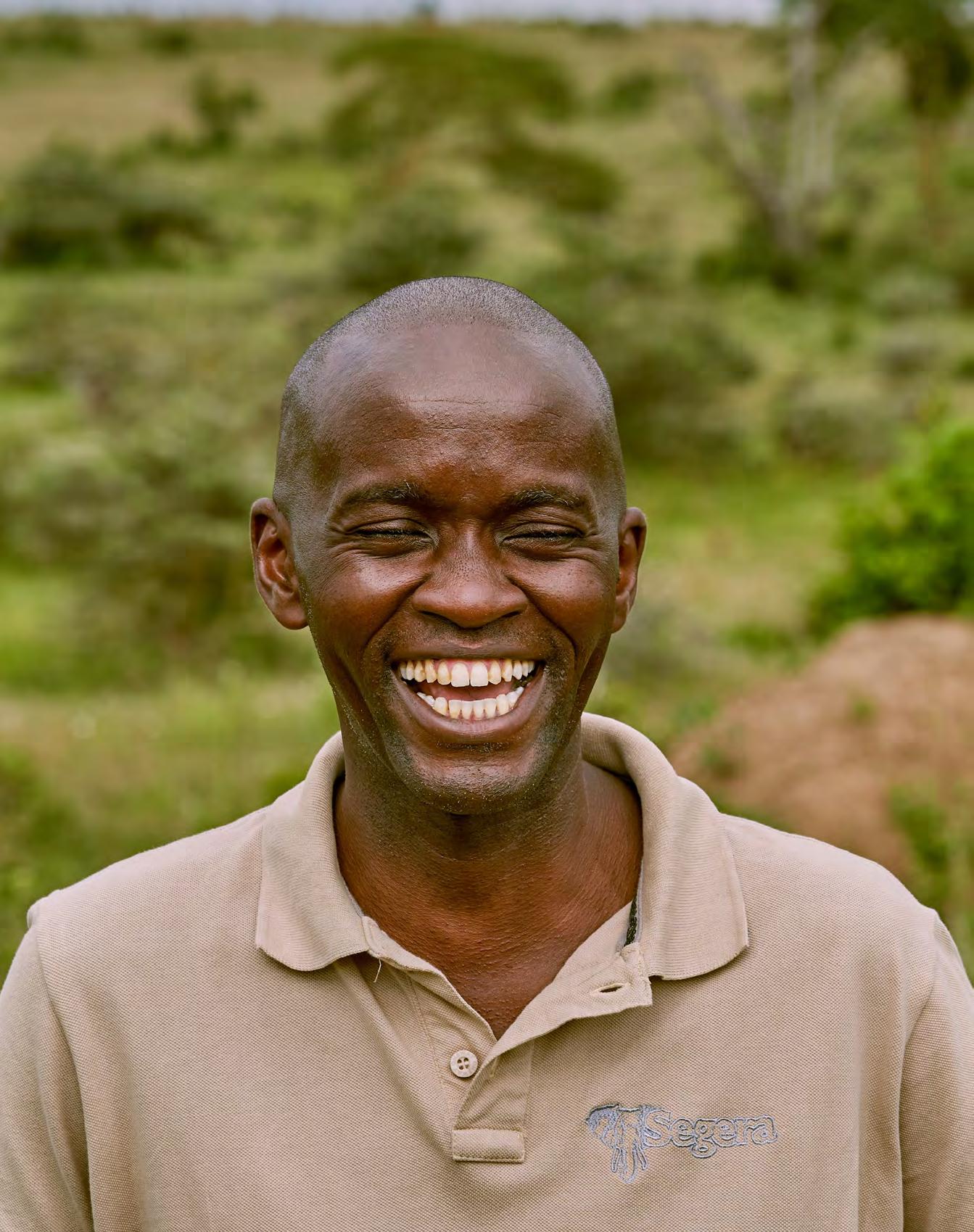
light of build and softly spoken, Benaiah Odhiambo’s calm manner belies his busy job, a juggling act that involves overseeing Segera’s 50,000-acre wilderness, its wildlife, personnel, and over 2,000 cattle - set to grow to 4,500 in the next few years.
Commencing his professional journey as an Administrative Manager overseeing logistics a decade ago, subsequent roles in Administration, Human Resources, and Operations have collectively shaped the groundwork for his current, multifaceted position. His ability to wear several hats at once becomes clear, as our interview is punctuated by phone and radio calls from the anti-poaching ranger team with patrol updates, and Segera’s female ranger academy trainers reporting the latest cohort’s progress.
“This is a 24/7 job. It’s very demanding and you must know how to balance all the work variables at play. The conservation side, livestock, personnel, community, and your family. I’ve seen passionate people join us and leave after a few days. Dedication and a love for the job are a must,” he adds.
Half of Benaiah’s work day is structured - assigning duties in the morning - and the rest of his time is more fluid, reacting to security, ongoing projects, and adapting to community needs. He thrives on the challenge of not knowing what each day will bring but acknowledges that building operations on a solid base, guided by the 4Cs, is of paramount importance.
“The Long Run, founded by Jochen Zeitz, has grown into one of the most important sustainable travel movements. The 4Cs – community, culture, conservation, and commerce are the pillars that help us run a healthy habitat on Segera,” Benaiah says proudly.
“The world is like a human being and has to be healthy to function properly. If balanced correctly the 4Cs lead to coexistence and a more peaceful world. Ubuntu (an ancient African word meaning humanity to others) and people are the greatest assets,” he says.
“Conservation is biodiversity, we need a world that is okay for future generations. Culture is beautiful, it defines us and there is joy in appreciating our differences. Commerce, trade, and empowerment help to make life easier and enjoyable, and these combined make it a perfect atmosphere to work in. Guided by the 4Cs, we hope to make the world a better place,” adds Benaiah.
During the COVID-19 pandemic, tourism in Kenya was hit hard, and he had to make tough choices about whether to send staff home, as a result of reduced income or to keep them. Segera chose the latter, keeping on most staff, to support them, albeit with some pay cuts and retirements. “Our community is important; almost everything revolves around it,” says Benaiah.
More widely the pandemic has, he believes, been a big wake-up call “for us all”. It is a wake-up call urging everyone to re-evaluate their choices while emphasizing the imperative to preserve the world for future generations. This highlights the critical role of organizations like The Long Run that advocate for sustainable travel.
Everything here is about balance,” Benaiah explains. Wildlife and cattle coexist at Segera, their symbiotic relationship creating a perfect savannah ecosystem. Cattle act as living lawnmowers and collect parasites from the rangeland (which are then removed by dipping). It ensures a healthy ecosystem, with both wildlife and cattle benefitting from each other.
While Benaiah describes his biggest achievement as “Seeing Segera grow”, he’s grateful that Segera provides an environment that fosters personal development too. “This place has molded me into the person I am today. I feel honored that I’m one of the few local ranch managers in Kenya, and happy to work in a space where people are given opportunities to grow to the next level,” he adds proudly.
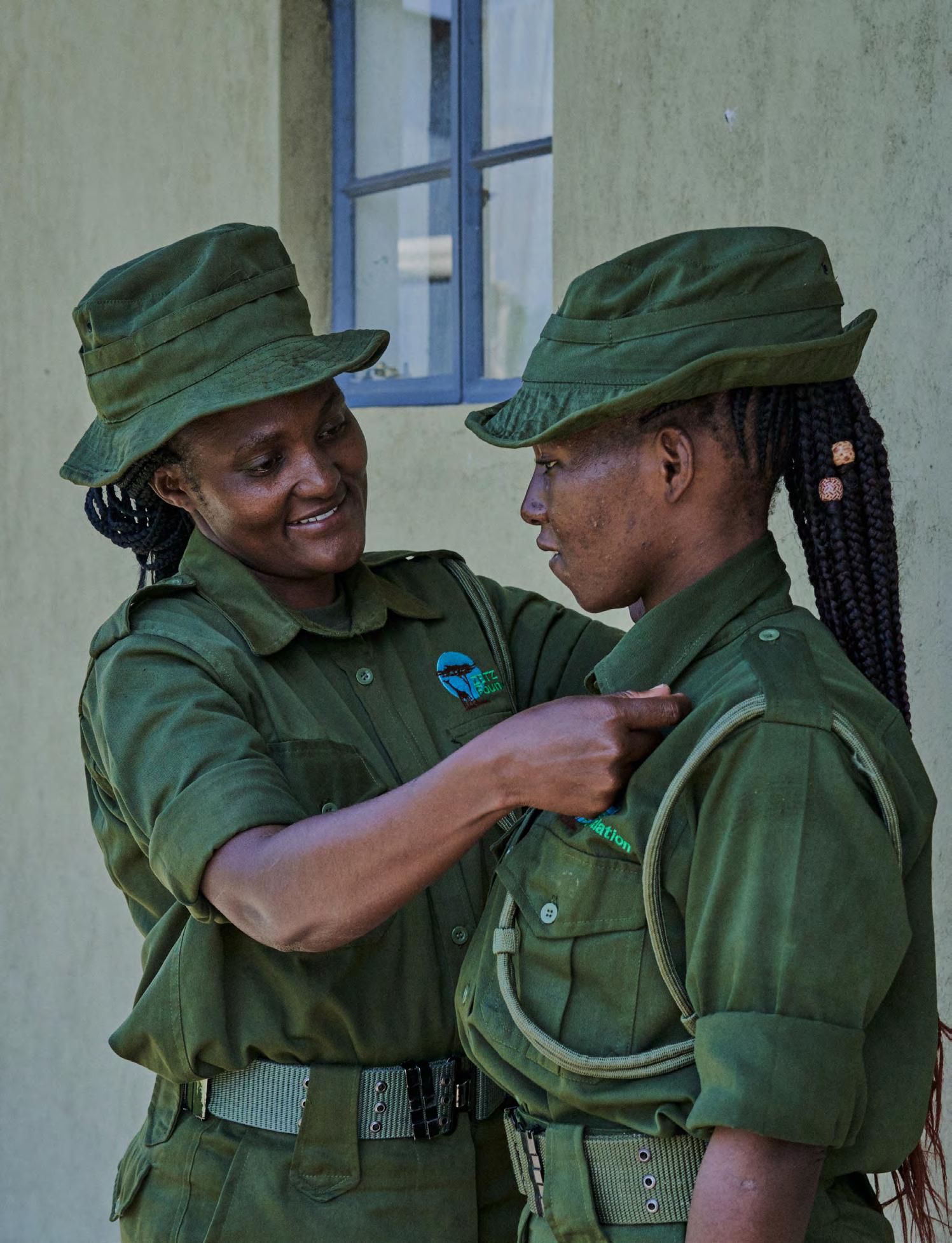
Clad in olive green camouflage uniforms, carrying wooden batons and water backpacks, the women move stealthily as they scan across the wilderness. One of them raises her fist. They all crouch as they whisper and peer into the bush. After a while, they all stand. Over tea back at base ranger commander Virginia Senteiya explains that they’d suspected there was a lion ahead, but, on this occasion, it turned out to be wind rustling through the bush. Recruited mostly from rural communities neighboring Segera, these women are proud graduates from East Africa’s first all-female ranger training academy,
“Women should be given equal opportunities with men and this unit has proven that conservation is no longer a man’s world. I challenge the Head of Security not to send us on joint patrol with the male rangers because we are equally as good or even better,” said Virginia, during their colorful and emotional graduating ceremony in 2019.
The Long Run Founder Jochen Zeitz echoed her sentiments, “In communities that have coexisted with wildlife for generations, women are natural custodians of the environment and astute managers of resources. Education, female empowerment, community engagement, and conservation are some of the pillars of the ZEITZ Foundation and Segera. The ranger academy is just one example of how we can create employment, sustainable income, and encourage the empowerment of women,” said Jochen Zeitz.
“I saw the initial interview videos before the training and I can’t believe the progression the ladies have made. They were unsure, intimidated, some looked outright scared, but now they are confident, can express themselves better, and are ready to mix it up with the male ranger team,” he added.
While a new chapter is slowly being written in Laikipia’s conservation effort with local women playing a key role, unbridled by cultural practices, traditions and the patriarchy that is rampant in northern Kenya, Virginia’s journey has been a challenging one. “Girls’ education was never a priority in our family, the community, and most parts of northern Kenya. Girls were there to be married off, raise children, and look after livestock. My dad was stubborn and didn’t want me to go to school. I had to force him and make him understand it was a good thing. My mother helped a bit but was timid,” says Virginia.
After starting school when she was a bit older due to financial constraints, she later dropped out of secondary school, returning to finish her education years later. After school, she got married and had a child, but she and her husband separated; Virginia wanted more than the traditional norm of raising kids and looking after livestock and began working whilst pregnant with her second child to support her young family.
At 30, the mother-of-two heard about the recruitment at Segera from her local community, it lit a spark within her, and she applied, undertaking an intense 10-day selection process. An intensive sixmonth training period followed. The first 3 months at Segera were spent learning a diverse set of skills - encompassing drills, defense, first aid, intelligence gathering, communication, map reading, mission planning, and meditation.
Following that, advanced tracking training occurred at Tsavo East National Park. Virginia vividly remembers the most challenging segment of the training: a rigorous three-day hardship session in Samburu, involving trekking through hostile territory.
“We had all lost hope, were dehydrated, hungry, and desolate but we all thought of the hardships we had left at home, our families and found renewed energy to finish the mission. We realized that teamwork is such a powerful tool,” says Virginia.
“Ever since I graduated as a ranger, I have a constant salary and have improved the life of my family and community around me. The community now respects me, and I get to be a role model to many young women in our area,” she adds. In 2021, she got an opportunity to visit the UK and Switzerland to meet some of the ranger program sponsors. Never in her wildest dreams did she think she would be sharing her life story with people across the world.
Each morning Virginia starts her day with a yoga session, before beginning patrol at 8 am. Unlike their male counterparts, the troupe doesn’t carry guns in the bush. “We have been highly trained to track and evade wildlife instead, and besides we grew up with wildlife in the community and understand their behavior,” she chuckles. As for the future, she urges parents from pastoralist communities to prioritize educating their daughters, as she knows first-hand that: “By educating a woman, you educate the whole village because women are nurturers, teachers, and the original conservationists.”
The inaugural All-Women Anti-Poaching Ranger Academy in East Africa was launched by the ZEITZ Foundation in 2019. Since then 27 female rangers have graduated from the academy on Segera, having undergone intense selection processes, months of holistic training, and field exercises. Under the guidance of Damien Mander (Founder of IAPF) and with the assistance of highly qualified instructors, the training provided included a wide range of skills such as Patrol Tactics, Conservation, Community Engagement, Tracking, Drill, Law and arrest, Canine Handling, and First Aid. These rangers play an integral role as mentors within their communities, empowering other women, sharing their acquired knowledge, and actively advocating for peace, intercultural understanding, and the preservation of wildlife.
DOB: 04-08-2017
Retirement: 04-08-2025
• Like Lindsay, she has a meticulous and deliberate approach to tracking. She takes her time, steadily and reliably following scents to complete her tracking tasks successfully
• She is the most calm and composed dog, which proves vital during highstress situations.
• She is the most affectionate and friendly.
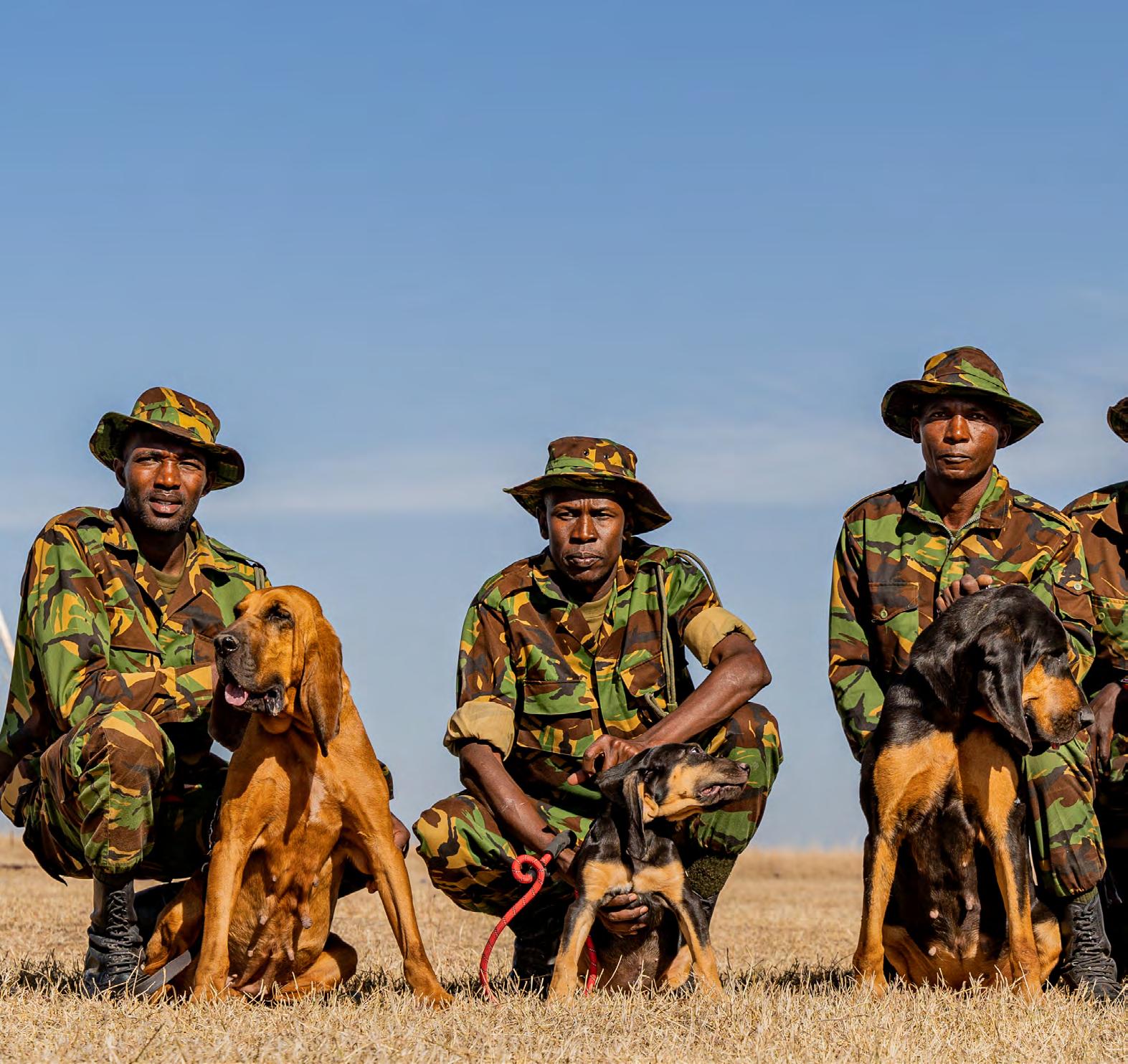
DOB: 04-08-2017
Retirement: 04-08-2025
• She is the bravest and most tenacious. Her fearlessness and adaptability stand out from the rest.
• She is a swift and precise tracker. She covers ground quickly while maintaining a high level of accuracy
• Her playful spirit, friendliness, and enthusiasm bring positivity to the team even during dangerous missions.

Lindsay, Mickey, and Stevie carry out a special mission here on Segera. They have been an amazing addition to the anti-poaching and security efforts and do a superb job of keeping wildlife safe. They also support local communities and neighbouring conservancies when poaching, cattle rustling, and cases of missing people occur.
These beautiful bloodhounds bring so much joy to everyone who meets them. Guests get to join in on daily activities, like their daily tracking and training and spa days on Sundays.
When not busy protecting the biodiversity on segera conservancy and providing additional security to the local communities, these incredibly talented dogs play hard with their dedicated handlers.
DOB: 04-08-2017
Retirement: 04-08-2025
• Exceptionally intuitive and intelligent
• Excellent methodical tracker with the strongest sense of smell. Though not the fastest in following scents, she is incredibly thorough and persistent, ensuring she does not miss any details or lose the trail.
As Lindsay, Mickey, and Stevie embark on their well-deserved retirement in 2025, we are incredibly proud of their remarkable service. The extraordinary legacy of this formidable trio will soon be carried forward by our new members: Harley, Daisy, and Gypsy. Born in December 2023, these new pups have found their home here at Segera where we are dedicating a year to their transition as they complete intensive training in tracking and bonding with their handlers.
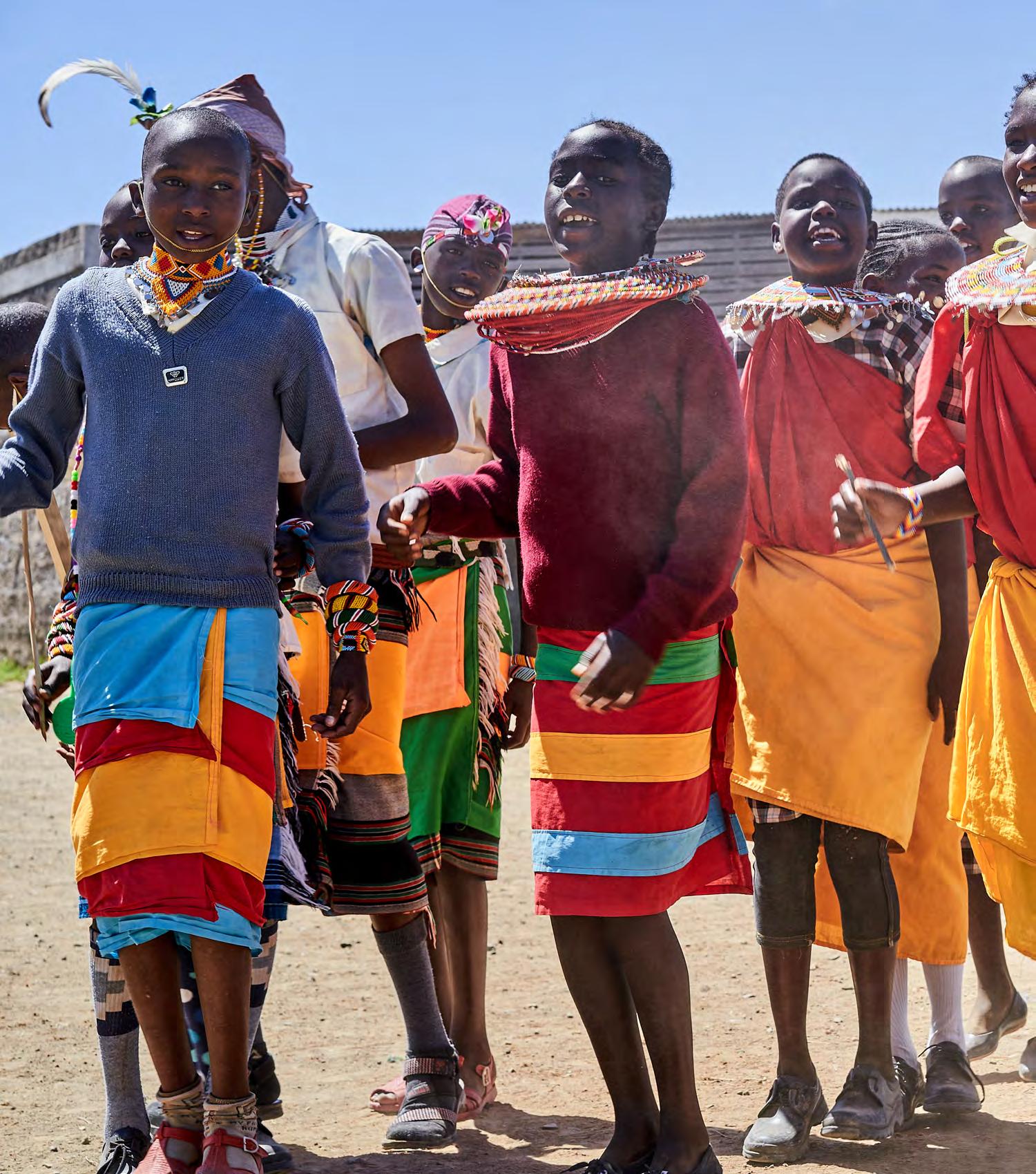
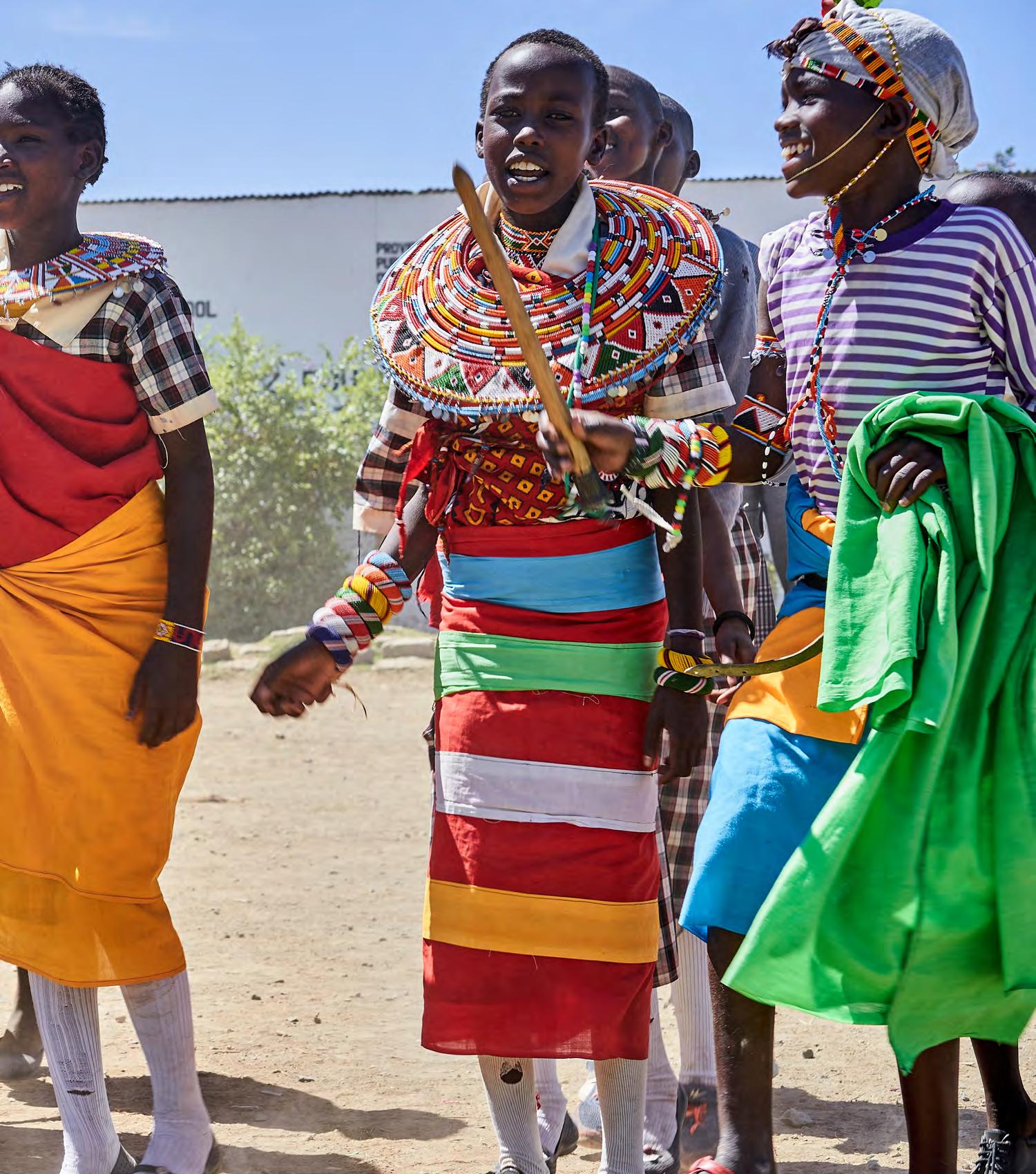
As a founding member of the Long Run, Segera shares the holistic “4C” philosophy of balancing Conservation, Community, Culture, and Commerce. Every stay contributes to the creation of a beautiful, sustainable relationship between the community, the wildlife, the landscape, and the people who want to explore the region. Over the years, the 4Cs projects have made an incredible impact thanks to Segera’s extraordinary guests and supporters of the ZEITZ foundation.
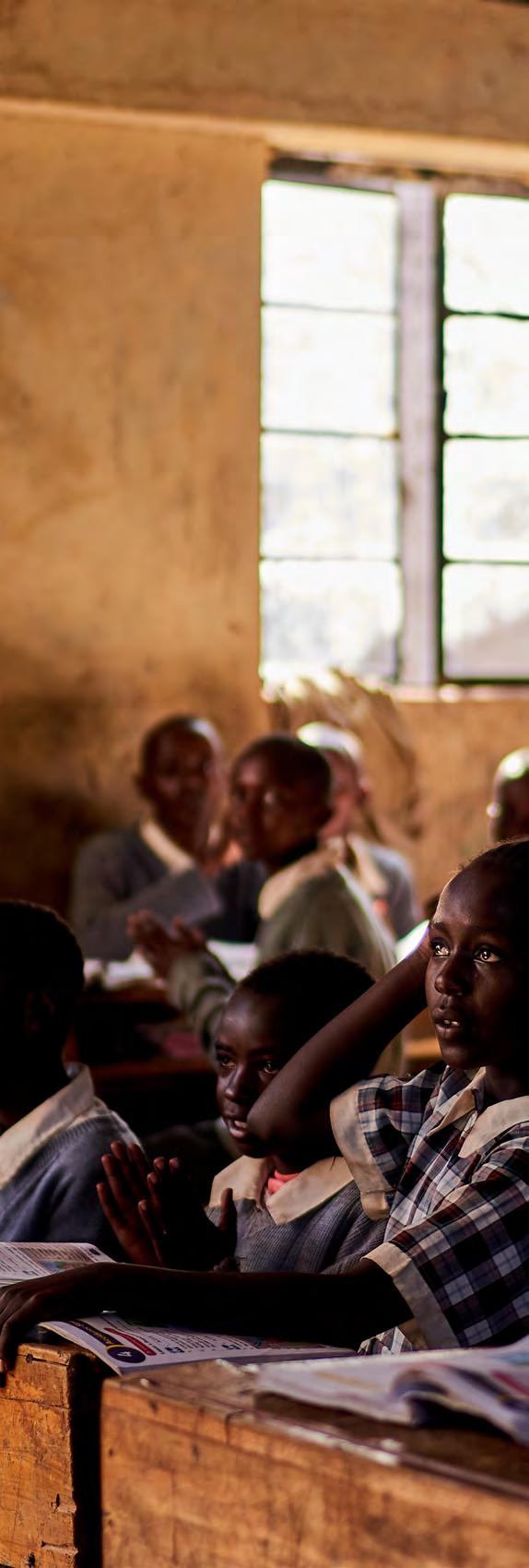
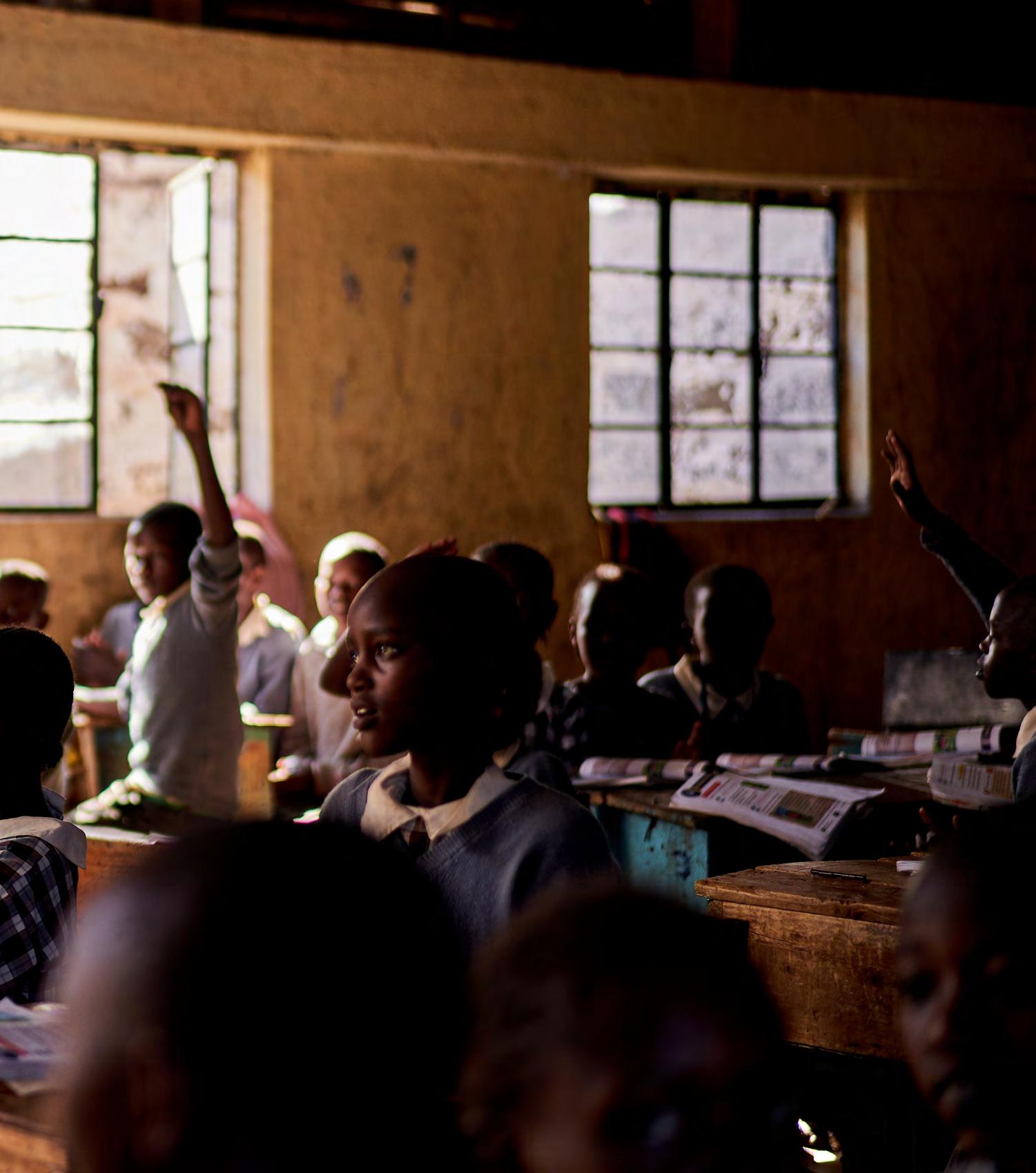
Through the support of donors and friends of Segera over the years, the ZEITZ foundation has helped grow the footprint of education in Laikipia. The program supports various schools from Pre-Primary (Early Years Learning) to Senior Secondary School levels. Our initiatives include various projects, such as the construction of new classrooms and toilet blocks, along with comprehensive renovations and repairs to enhance learning facilities. We have also donated essential learning supplies such as desks, school uniforms, and books.
A bursary program is in place to assist bright students from underprivileged families around Segera Conservancy. We firmly believe that education is transformative and a key driver of sustainable development, even as we create a brighter future for the next generation.

The Laikipia Learning Centre will be a unifying and inspiring immersive learning environment aimed at increasing access to education, knowledge, and awareness on Conservation, Community, Culture, and Commerce (the 4Cs) for children and adults from Segera’s local communities.
This multipurpose facility will serve as an education centre for both adults and children from Segera’s local communities. Plans for this center are still in development, with a local eco-conscious design firm hired to complete the architectural plans. This multipurpose facility, housed in a repurposed airplane hangar, will provide training in a wide range of topics such as conservation, culture, and sustainable commerce.
The Learning Centre will also showcase various initiatives by the ZEITZ foundation and provide an opportunity for guests from Segera, and beyond, to visit a community hub where they can learn about the beautiful and sustainable balance of the 4C projects.
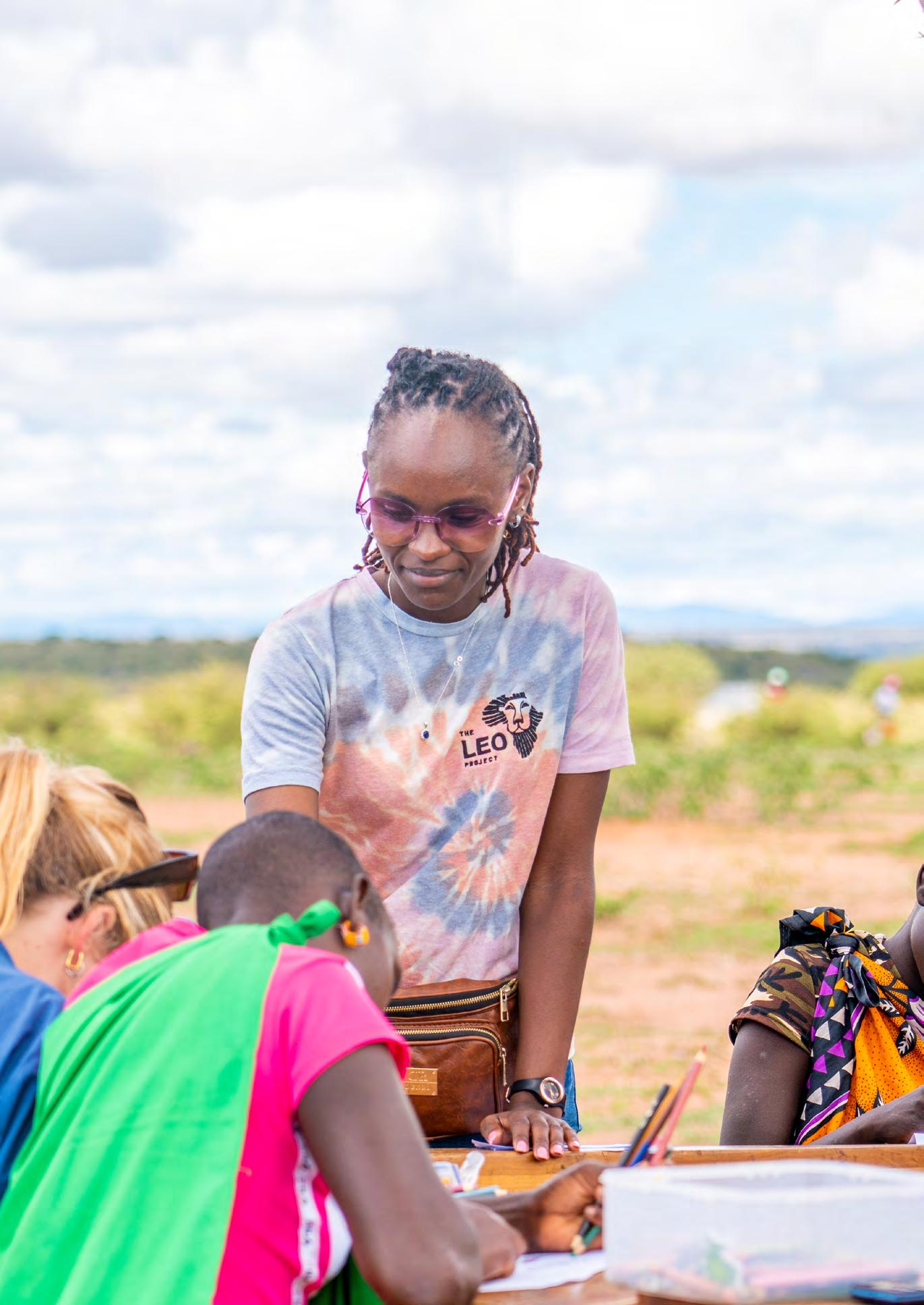
In collaboration with the Leo Project, the ZEITZ foundation embarked on an initiative to provide muchneeded medical attention to some of the communities that lack access to basic healthcare. According to a rapid needs assessment, one community must travel more than 50 kilometres to the nearest health facility. The first mobile healthcare camp at Sugutan community was a success, with over 40 people receiving health services and medication, including infants. Plans are underway to conduct a quarterly mobile medical camp in two communities that do not have access to facilities as well as establishing a small medical unit pilot program at one of these sites.

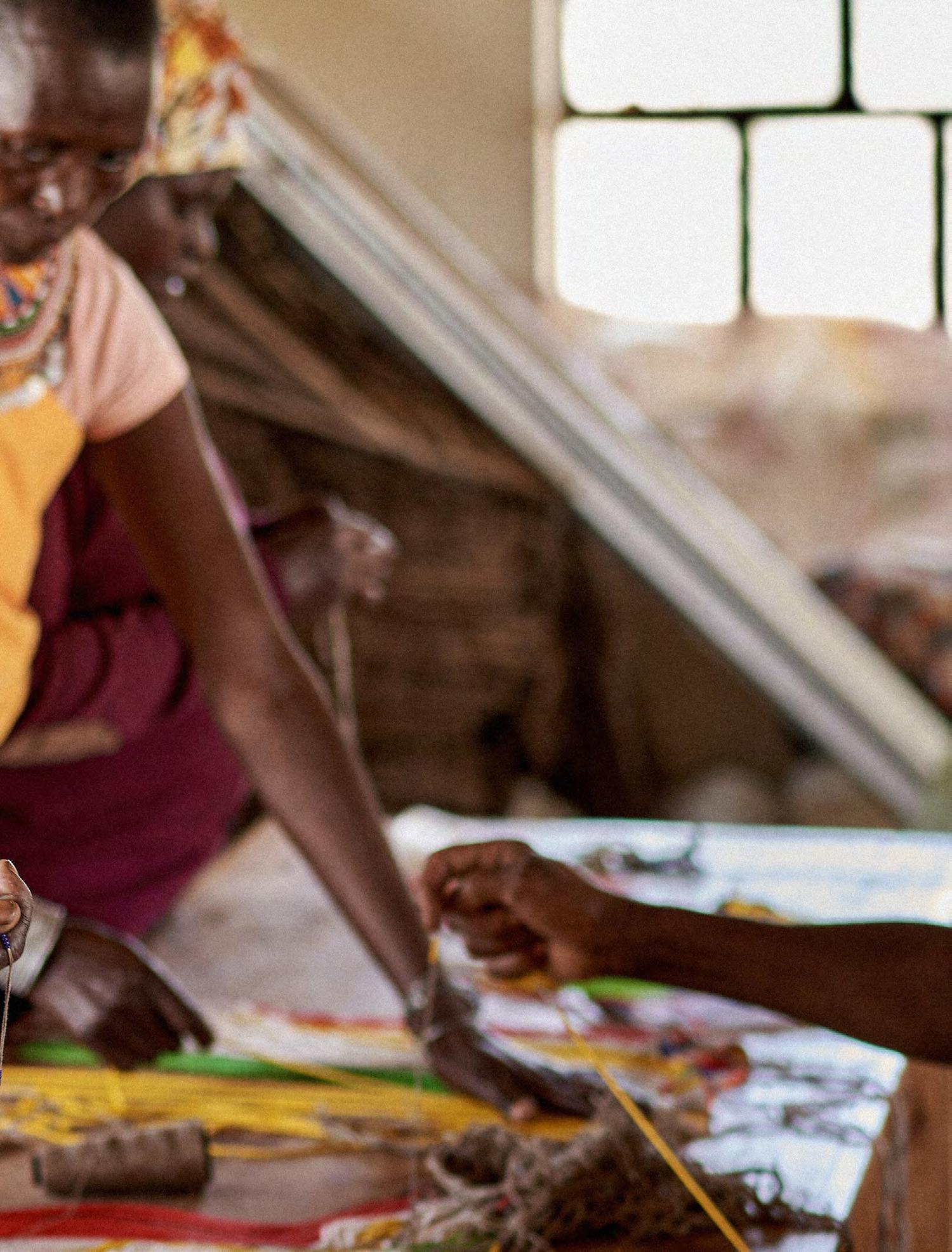
In Kenya’s northern tribal heritage, the age-old tradition of beading serves as a vital means for many women in these communities to generate independent incomes for their families’ livelihood and well-being. To provide business development training and market access to these women, the ZEITZ foundation has forged a partnership with Urban Ranch to work with women drawn from three communities (Suguroi, Sugutan, and Endana-Ereri). Through these efforts, the women gain the tools and opportunities necessary to generate independent incomes.
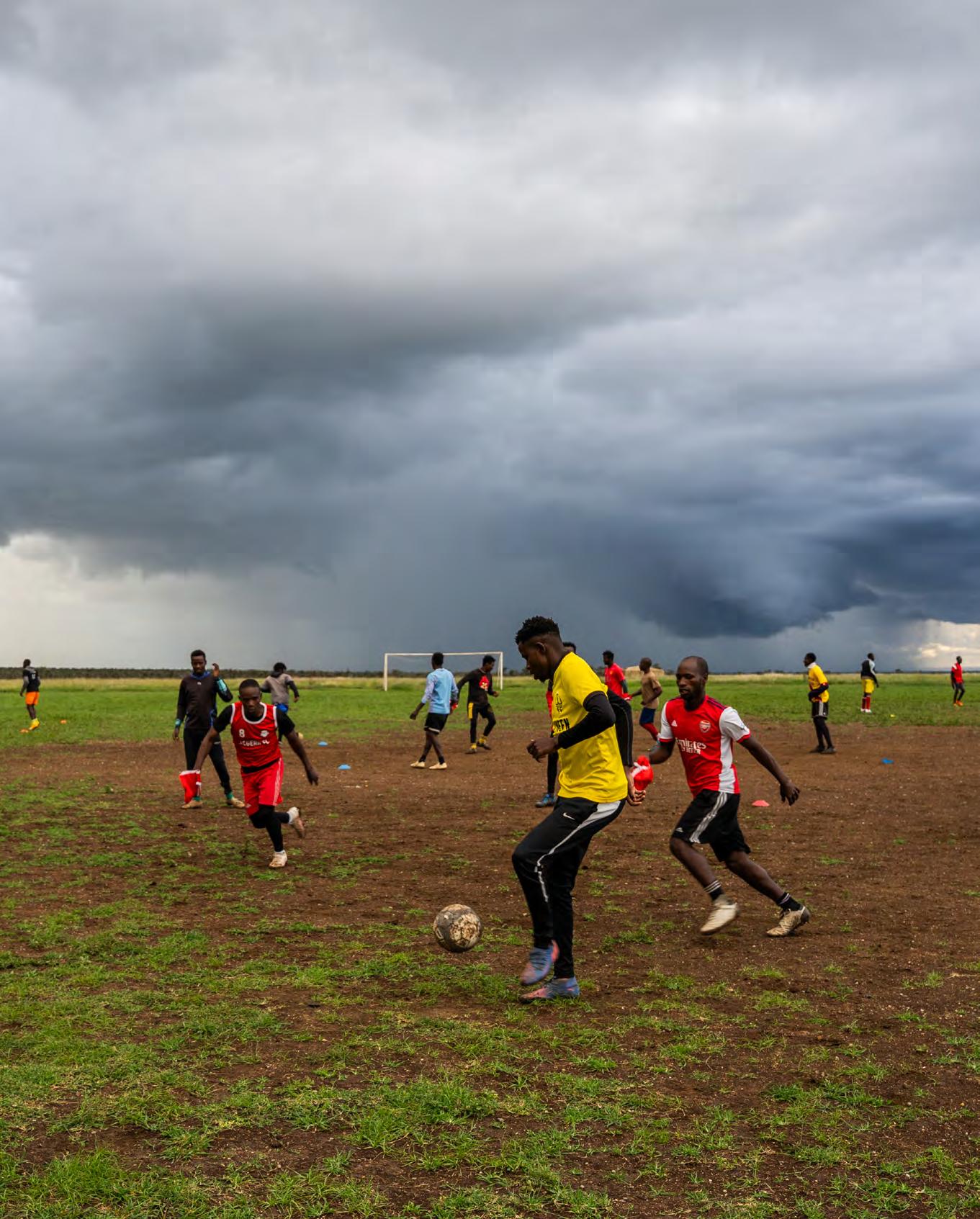
It is 5 pm, on a warm Thursday evening and the pitch is alive with activity. Though filled with dust, this doesn’t stop the young lads from enjoying a practice session after a full day’s work. A loud whistle goes off and everyone congregates around the coach. A short briefing is held and the team members split into two groups, differentiated by the colour of their vests. In what is characterised by loads of ball kicking, shouting, panting, and sweating, the two-hour session culminates with a beautiful sunset on the horizon of the wild plains beyond.
Established in 2014, the football club morphed from a pastime activity for staff members to unwind after work. “Within no time, many people gained interest and we soon formed a steady football team,” says Benaiah Odhiambo who doubles up as the Ranch Manager at Segera and Head Coach to the team.
Nine years later, the football club now stands at the top of their Division, having won numerous games and accolades alike. “Our turning point was in 2017 when we decided to register the team under the Football Kenya Federation. This gave the boys an opportunity to face more competition from other teams countrywide,” says Benaiah. From friendly matches with other clubs and neighbouring teams in Laikipia, the football club now plays against various teams in the Second Division of the National League.
The newly crowned champions of the 2022/2023 Laikipia Governor’s Cup tournament are a unique composition of passion and skills. For most players, their love for football was an avenue for them to gain employment at the Conservancy. “Being a part of the team has helped me gain new experiences. Navigating daily challenges both at
work and from the games we take part in has made me grow my skills in football as well as in my workmanship. It is truly a dream to be able to earn a living out of my passion for football,’’ says Paul Wachuga, who works as a Junior Operator at the Workshop and is also the team’s Goal Keeper.
A myriad of trophies lay displayed at the Ranch Manager’s office. They are all testament to the growth of the team over the years. “We are always proud to represent the Segera brand out there. The victories have made us appreciate the amazing local talent that we were sleeping on,” adds Wachugu. The majority of the players are also drawn from the nearby communities. “You can see the local young children inspired whenever they see the players during a tournament within the community.”
For this team, football is not something they have had to do by chance. Theirs is a long-lived passion since childhood. Their dream is to play in the Kenya Premier League and beyond, all this while inspiring players from Laikipia County to aim to compete at the top. “Being the first team in Laikipia North to play in the Second Division of the National League, we hope to continue breaking barriers. Right now we must ensure the team continues to cement its place among the top-ranked teams in the country,” adds Benaiah.

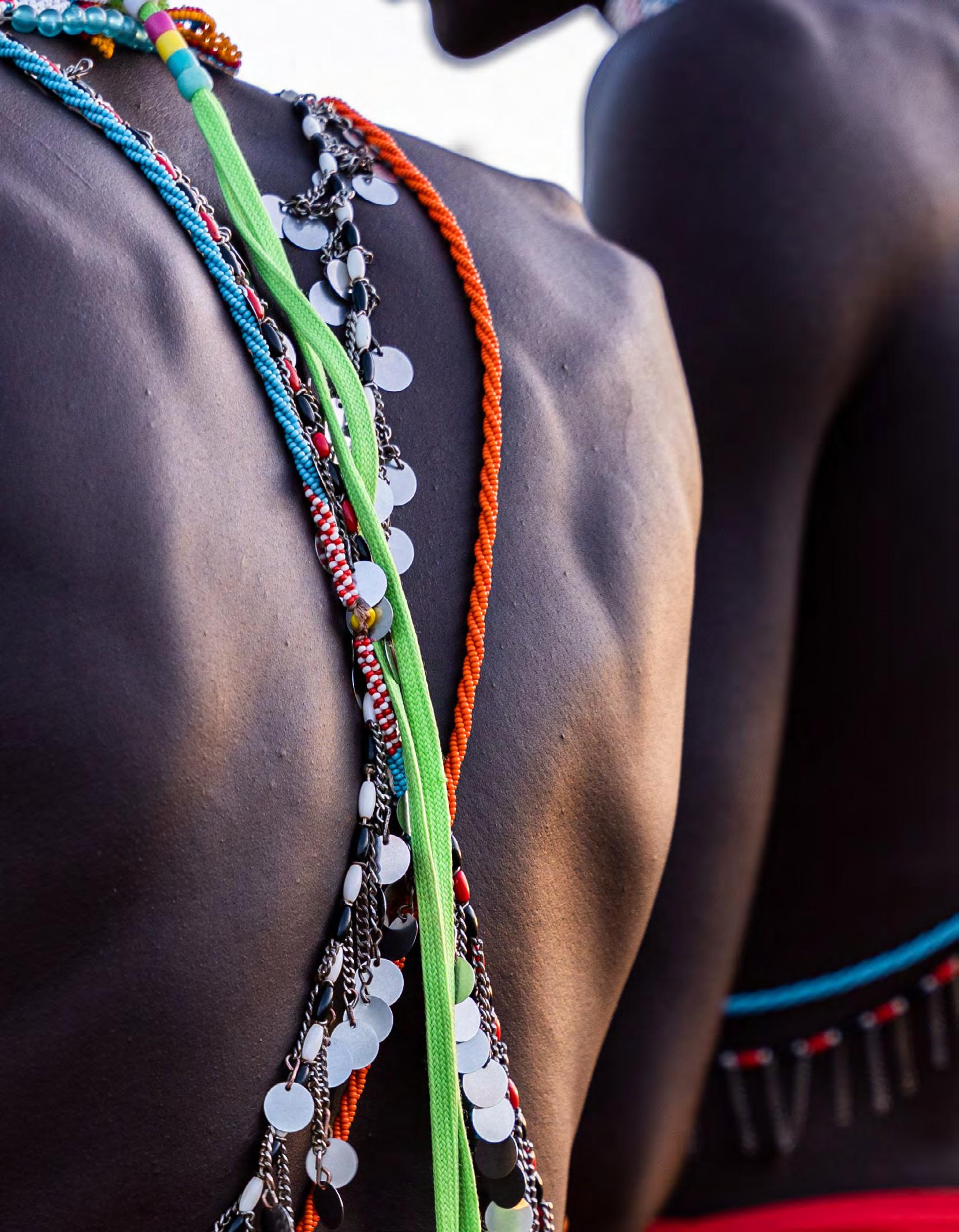
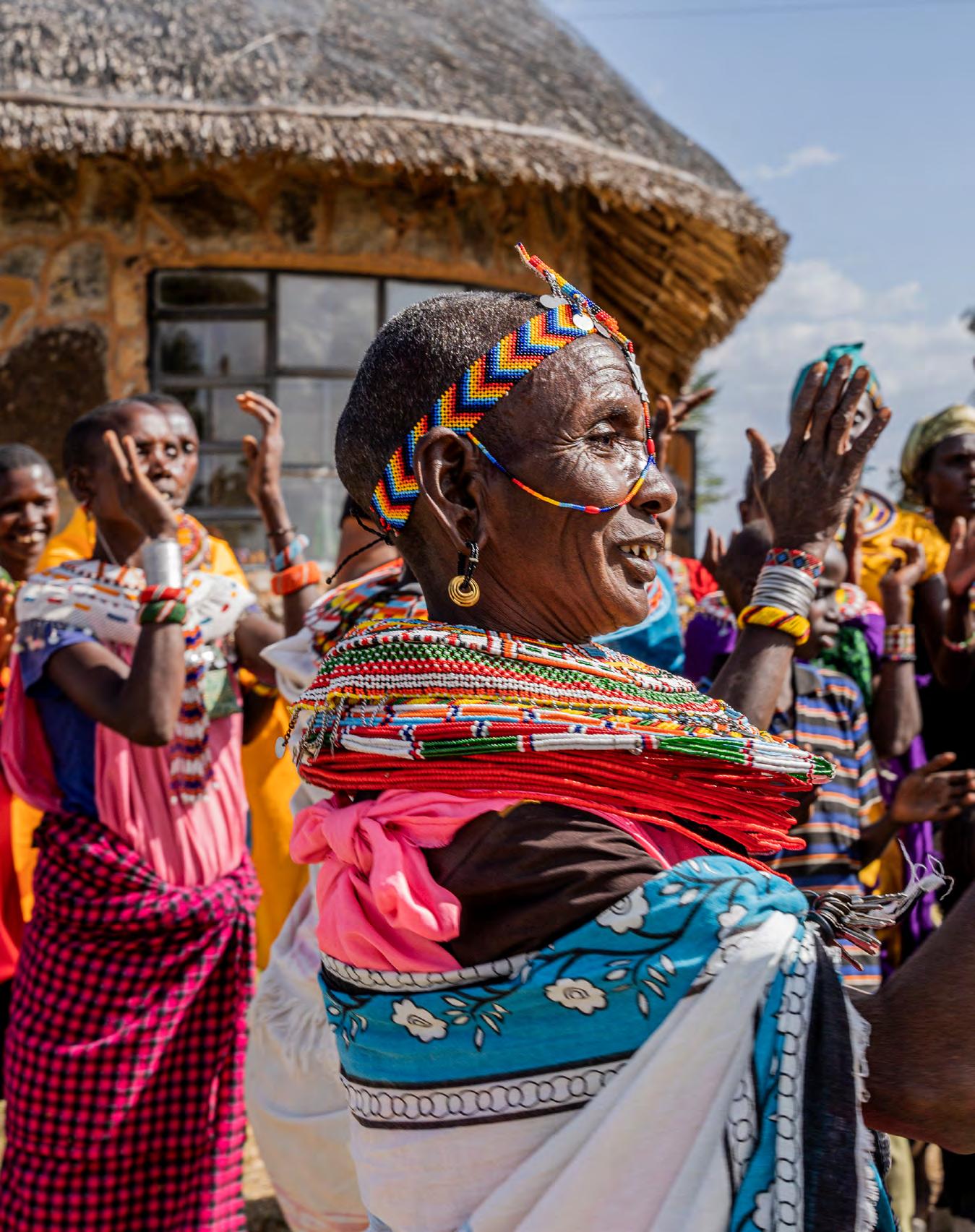
The ancestral beadwork of Northern Kenya is an intricate art form that involves the threading together of beads of different shapes, sizes, and colours, connecting them along the same wire or thread. This traditional craft has been the very thread uniting the members of SATUBO - a twenty-strong female collective comprised of women from the historically warring Samburu (SA), Turkana (TU), and Borana (BO) tribes of northern Kenya.
Traditionally used to decorate costumes, beadwork is practiced across all three communities and passed from one generation to the next. In 2010, in the aftermath of particularly turbulent post-election violence, the women from these pastoral communities realized they bore the brunt of unrest, left behind to face the consequences of intertribal conflicts, and destroyed homes. Setting aside their differences they, with the help of the ZEITZ foundation, formed a women’s collective, which allowed them to earn an independent income, and support themselves by doing what they knew bestbeadwork.
Headquartered on Segera Conservancy, the ZEITZ foundation creates and supports positive impact projects that promote holistic conservation, enhance livelihoods, and foster intercultural dialogue and sustainability. Segera started sending guests to SATUBO workshops to see the women in action.
“In 2010 we started working closely with Segera and this collaboration was god-sent because it brought out the best in us - our entrepreneurship as well as craftsmanship. We got our first money as a result of them and we were over the moon,” says SATUBO spokeswoman Jane Karimi.
Inviting visitors to see their craft first-hand and selling their colourful beadwork was life-changing for the SATUBO collective. “Some of the women had never earned an income before. The little money given to them by their husbands was to go to the market and purchase basic items for the family, so it was a very big thing,” says Jane.
“One of the guests was teary-eyed when his family joined us for the day and promised to build us an office and workshop if we could provide land. This was one of the happiest days in our lives. We had
been saving 30% of our income for some years to buy land and then this angel appeared,” says Jane as she shows us around the SATUBO workshop, a beautiful stone and grass thatched house built on land just outside Segera Conservancy with help from the ZEITZ foundation.
Since then, SATUBO has continued to go from strength to strength, even collaborating with grande dame fashion designer Dame Vivienne Westwood on her Ethical Fashion Initiative (EFI). Overcoming initial opposition from men in SATUBO women’s communities, who initially believed a woman’s role was confined to caregiving and household responsibilities, they eventually recognized the positive impact of women gaining independence and additional income on the entire family.
With no tourists visiting, and no income, the COVID-19 pandemic hit the group hard, reminding Jane of the time before SATUBO was formed, when hardship was a way of life. Once again showing their adaptability and resilience in the face of a challenge, the women of SATUBO ventured into farming. “With no income, we had to find other sources of revenue to survive, and we started cultivating vegetables and rearing chicken,” says Jane. “Segera noticed our efforts but realized that we were doing it the wrong way and sent over some of their experienced gardeners to help us out,” she adds as she shows us their garden.
During the COVID period, the ZEITZ foundation extended support to SATUBO by building a kindergarten. This facility not only offers safe and high-quality childcare for the group’s preschoolers but also serves neighboring families. The proximity to the SATUBO workshop allows mothers to sustain their work commitments while ensuring their children’s well-being.
SATUBO is about more than just financial rewards, explains Jane. “We are always learning and helping each other, and coming to the workshop gives us peace of mind that we can’t find at home. You will find us here working and chatting loudly; there is no time to be sad even if the world is a dreary place, and we appreciate the little that we have.”
For SATUBO, the ZEITZ foundation and Segera are invaluable partners. “We are eternally grateful to them for their help, we have been partners for more than a decade ” says Jane, explaining that SATUBO would never have achieved as much without their support.
Engaging with new cultures during your safari experience makes it even more profound, and life-changing and opens a new window into exploring our world.
As globalization continues to advance, it becomes increasingly important to safeguard and honour our cultural heritage, which includes not only monuments or artifacts but also living customs, performance arts, festive gatherings, knowledge about nature, and the expertise required for traditional craftsmanship.
Segera is keen on sharing these enriching cultural experiences with its guests. Through immersive interactions and meaningful connections with the communities, the vibrant tapestry of local traditions showcases the true essence of our shared humanity. By partnering with the communities around the greater Segera, guests can immerse themselves in community experiences and get educated on their local cultures during their safari visits to nearby villages. These cultural interactions are fostered through performing arts, beading, medicinal plants, and cuisines, as well as seeking traditional interpretations of the nature around us.
• The Samburu, known as the “Butterfly” People, adorned themselves in vibrant attire, ornaments, and elaborate hairstyles. Men used red ochre to dye their hair, morans spotted long braids, and women wore stunning, multicolored beaded necklaces and traditional jewelry.
• Beaded necklaces symbolized beauty and signified the wearer’s social status and wealth.
• The Samburu were traditionally nomadic pastoralists in Northern Kenya who relied heavily on cattle, goats, sheep, and camels for survival, primarily consuming milk and blood from their cows.
• Men roamed with livestock seeking pasture and water, while women handled milking duties. Their nomadic lifestyle led to frequent relocations in search of fresh grazing grounds every few weeks.
• Their huts, called Manyattas, were constructed using hide, mud, and grass mats strung over poles, with a fence built around them to ward off wild animals. They would dwell in groups of five to ten families.
• The Samburu believed in one God, called Nkai. They made offerings and prayers important for rainfall and livestock.
They also had diviners (Laibon) to communicate with spirits through dreams and trances.
• Circumcision marked the transition to manhood and womanhood. Only circumcised men and women were allowed to marry.
• After circumcision, young men received gifts, food as well as a bow and arrows. The mother wears a distinctive beaded necklace, symbolizing her son’s transition to a moran. Morans defend livestock and strategize raids in rival villages to acquire animals.
• Girls are gifted red necklaces by their fathers at a young age, symbolizing a commitment to marry them to a pre-selected man.
• Dance holds cultural importance in Samburu traditions, featuring a style akin to the Maasai, where men form circles and showcase high jumps from a standing position.
• Considered one of the largest nomadic communities in Kenya, the Turkana are a Nilotic ethnic community in Northern Kenya.
• They kept cattle, goats, camels, sheep, and poultry (especially ducks). Those close to Lake Turkana and River Turkwel carried out fishing and farming alongside pastoralism.
• Livestock supplied milk, meat, and skins for crafting bags and clothing. Camels, considered a wealth source, were significant in ceremonies, often slaughtered for matrimonial exchanges or to strengthen friendships..
• The Turkana women traditionally took care of the children and household duties. They excelled in crafting beaded ornaments and constructing semi-permanent houses during homestead shifts.
• Unlike many, the Turkana didn’t practice circumcision as a rite of passage. Girls could marry at fifteen, while boys proved their transition to adulthood by mastering the art of hunting and killing an animal with a single spear throw. This symbolized strength and skill.
• Marriage among the Turkana was between the members of the clan or the mother’s clan to strengthen relations and social alliances. The Turkana practiced polygamy a lot. A man was to have at least two wives. A man with only one wife was considered as one with just one leg.
• The Turkana people had elaborate clothing and adornment styles. Clothing was used to distinguish between age groups, development stages, occasions, and status of individuals or groups in the Turkana community. Men and women both wore wraps made of rectangular woven materials and animal skins.
• Men carried stools (known as ekicholong) which they would use rather than sitting on the hot midday sand. These stools also doubled up as headrests and also protected any ceremonial head decorations from being damaged.
• When it was dry, they relied on dried fruits gathered during the previous harvest season. They also used to store fat in a special guard made of donkey skin. The fat would stay for up to 6 years and see them through the drought.
• The Borana are semi-nomadic herders with Southern Ethiopian roots. They are a Cushitic linguistic group and considered the largest sub-ethnic group of the Oromo people.
• They kept cattle, goats as well as sheep as well camels which they used to travel long distances. Some practised small-scale farming on fertile lands such as the higher regions of Moyale, Marsabit, and the river basins in Isiolo County.
• Before the spread of Islam, they believed in monotheistic communication through intermediary priests called Qalla. Objects such as trees, springs, and rocks were considered to have spirits
• Today, the Borana cultural practices are strongly tied to Islam.
• While the men dominated village life and were in charge of the herds, women played a vital role in building Borana homes and performing the elaborate dances that signal the birth of a baby.
• The Borana naming system was inspired by the time of day one was born.
• Circumcision occurred between the ages of 7 and 13 for both boys and girls, without elaborate celebrations. Those undergoing circumcision would be isolated.
• The Borana were polygamous and the eldest wife occupied a senior position in the family
• The Borana sniffed tobacco for leisure. The tobacco container was made of horn and partially covered with animal skin while the tobacco pouch was made from goat scrotum.
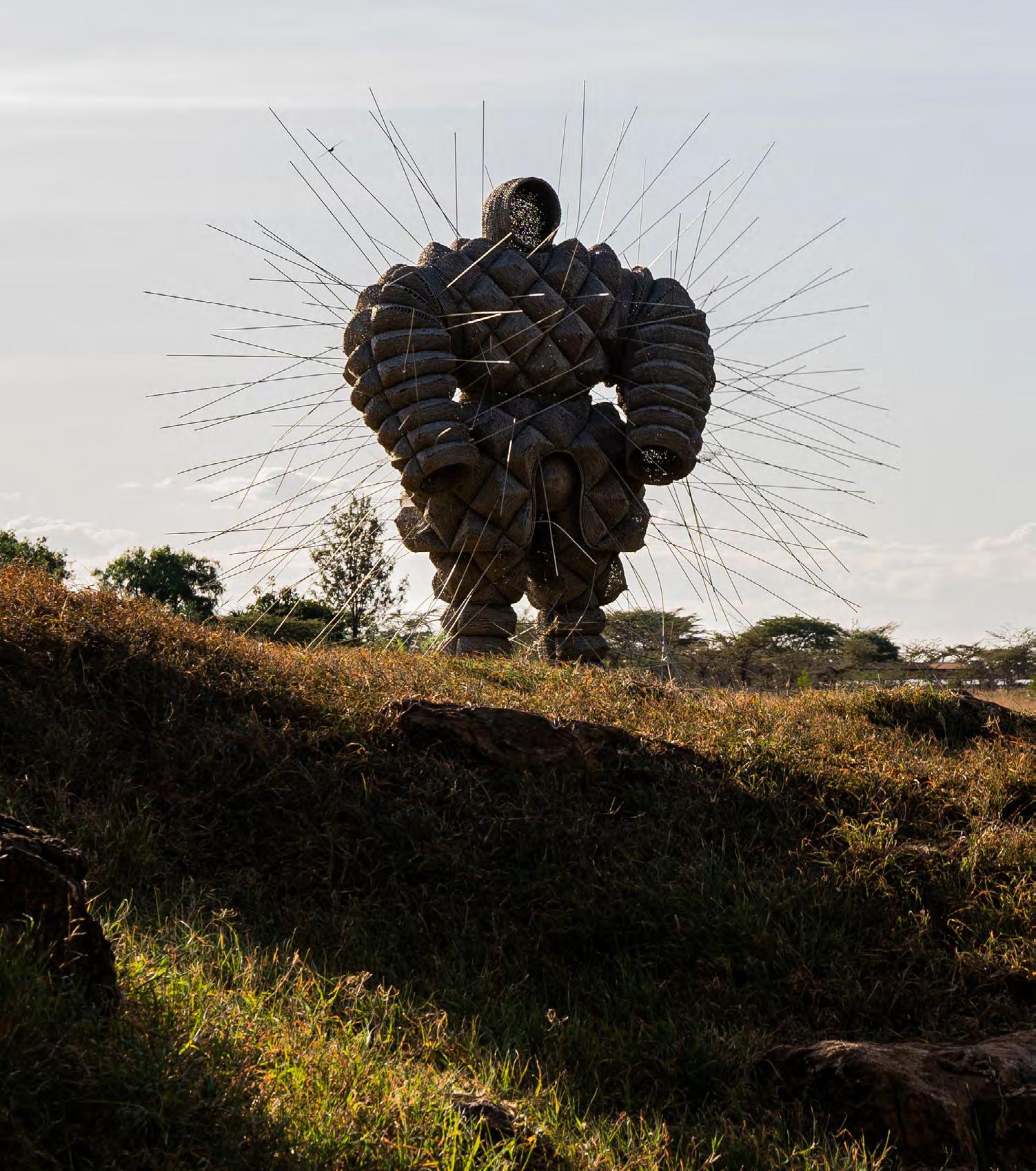
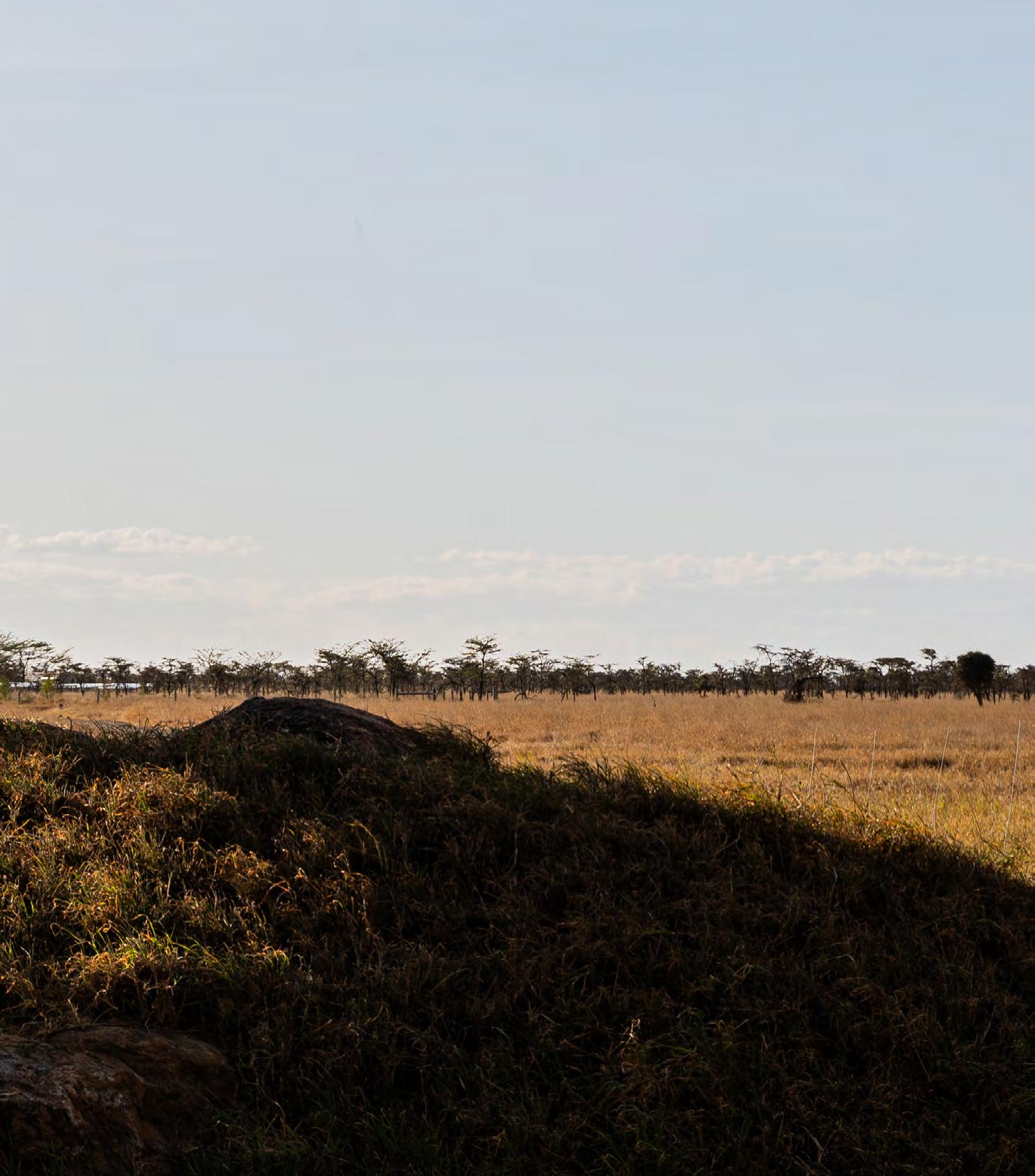
Segera stands as a beacon for contemporary African art, proudly showcasing the vibrant creations of some of Africa’s most inspiring and visionary artists. Nestled within the botanical gardens and the exquisite art gallery space in the Stables, these captivating installations transcend mere aesthetics, inviting visitors on a journey of introspection and enlightenment.
At the heart of their mission lies the belief that art is a powerful catalyst for social change. Through bold expressions and poignant narratives, contemporary art serves as a mirror reflecting the complexities of our modern world.
By shining a spotlight on issues surrounding power dynamics, social justice, and cultural identity, these artworks compel us to confront the pressing questions that define our collective humanity.
To enhance the guests’ understanding, they conduct immersive art tours that delve deep into Africa’s diverse political, social, and cultural fabric. These tours offer more than just a glimpse into the art; they foster meaningful dialogues and foster a deeper understanding of Africa’s rich tapestry of voices and perspectives.
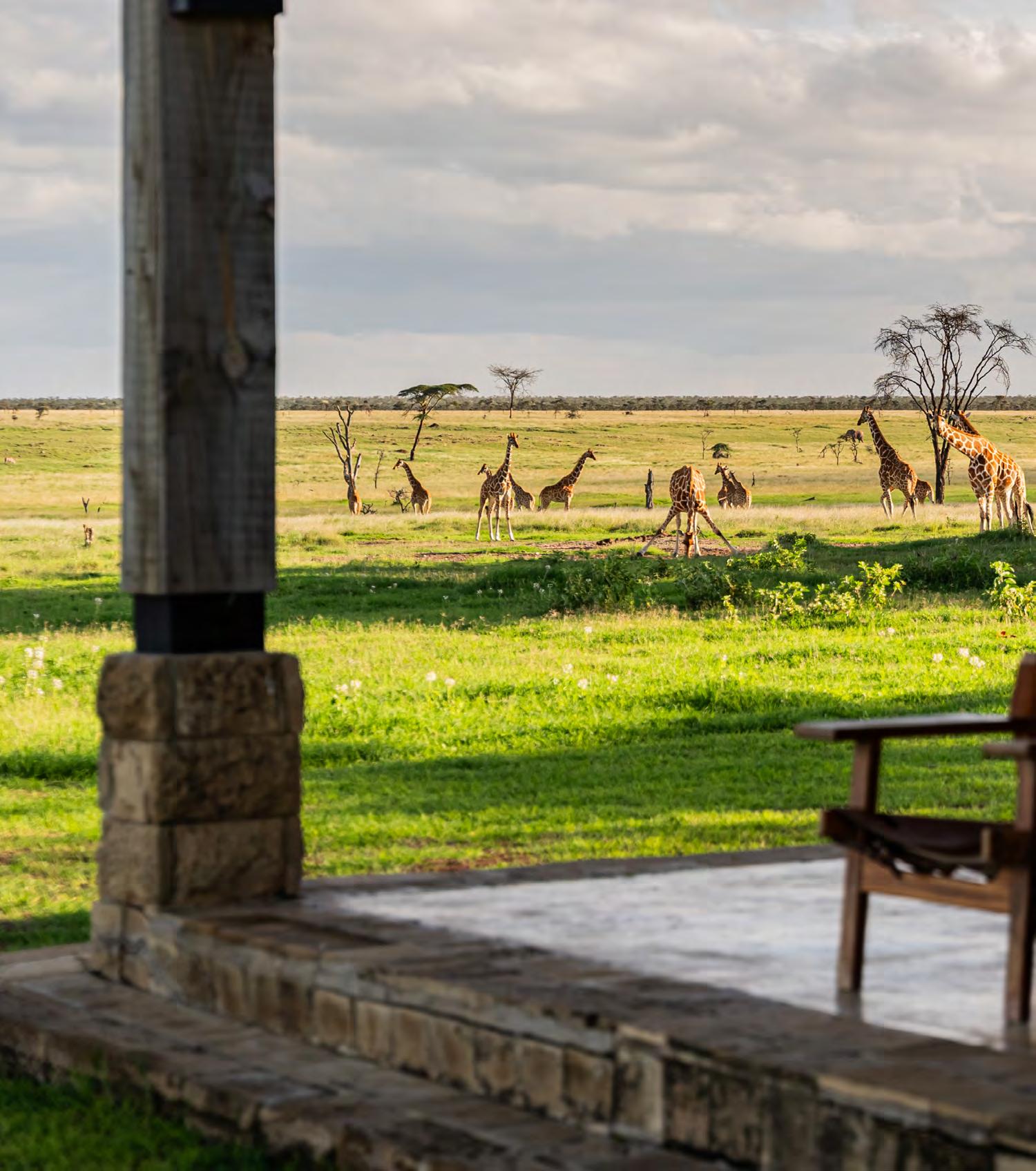
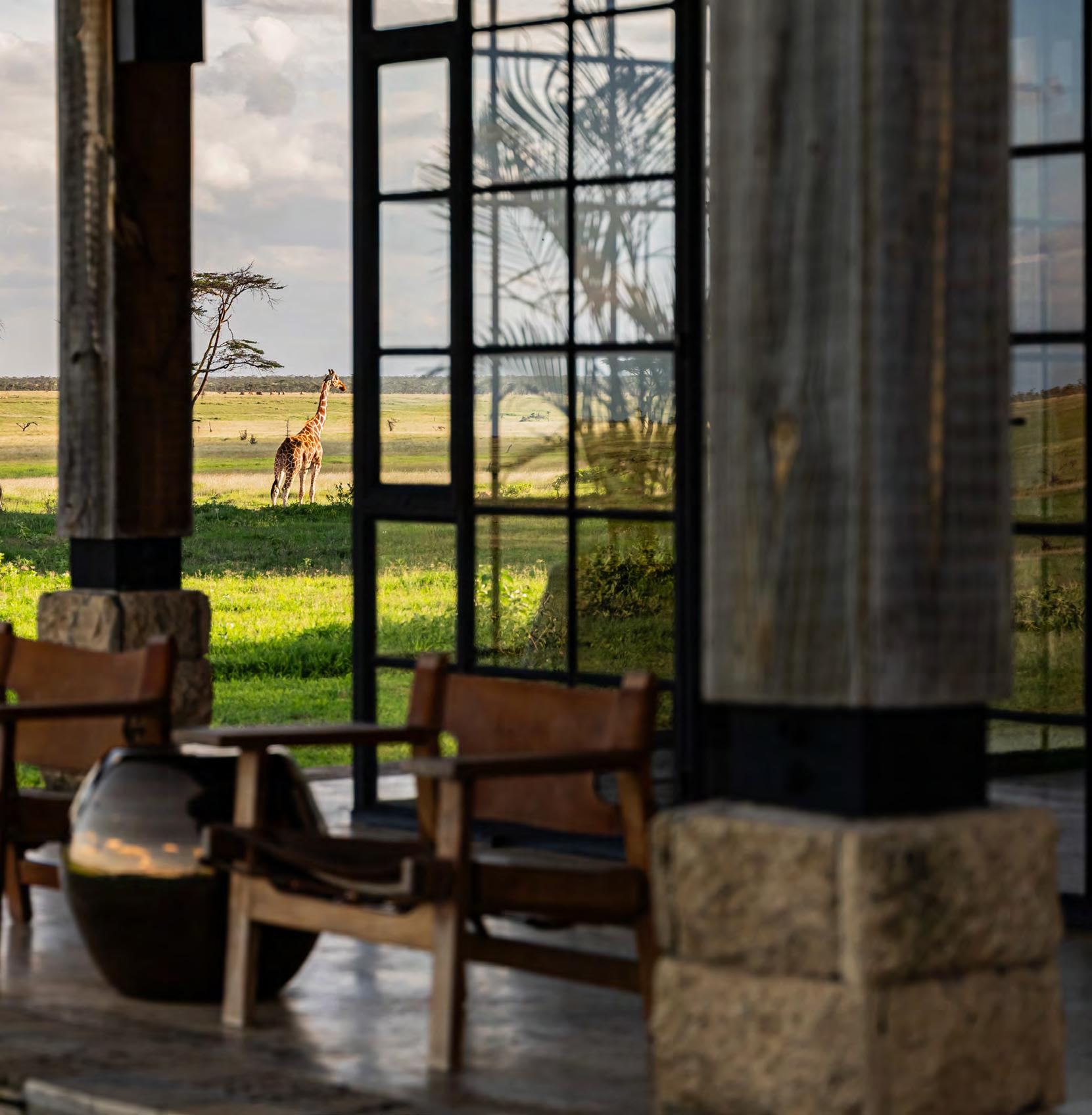

Your food journey at Segera goes further than just what’s presented on your plate. Innovative, delicious, and tailor-made meals are prepared with only the finest locally sourced ingredients, such as fresh vegetables gathered from our on-site garden.
Food is a passion at Segera that shapes your entire guest experience. Your food journey forms the heart of your stay there - as beautiful interactions and heartwarming connections are shared over meals in the most remarkable settings. It’s an acknowledgment of the artistry and dedication behind crafting unforgettable culinary experiences that highlight the unique, fresh seasonal flavors of the region.
Segera’s incredible cuisine starts at home from their very own organic farm gardens and orchards. Here, a diverse array of fruits and vegetables is cultivated year-round. From refreshing juices to exquisite salads and pasta dishes, the chefs curate bespoke farm-to-table menus daily, showcasing the delicious bounty from the gardens. Segera takes pride in growing much of its food and ensuring that the rest is locally sourced and adheres to sustainable practices that preserve our food ecosystem. This commitment is not only important to ensure freshness and quality but demonstrates a dedication to supporting local community enterprises.
The daily changing farm-to-table menus are carefully designed by the chefs and adjusted for each guest to make your food journeys at Segera truly bespoke and delicious. As a guest, you have the unique opportunity to join in the vegetable harvest, gaining insights into the organic farming processes and fostering a deeper connection with the food on your plate.
Segera’s Culinary team takes pride in creating special dining experiences across various unique venues. Every dining setting offers a chance to indulge in exceptional farm-to-table cuisine while enjoying diverse, spectacular views. Surrounded by nature in a contemporary safari style, these dining spaces ensure that your food journey at Segera is truly unforgettable.

What would you say is the most popular dish/ cuisine amongst guests?
We don’t have a specific one as it varies based on the preferences of the guests we are hosting. Lately, we’ve been making efforts to introduce our Kenyan cuisine, and the response has been overwhelmingly positive.
What is the most fulfilling or memorable kitchen moment you have had with your team?
One of the most cherished moments in the kitchen occurs when we have guests with specific dietary needs. In those instances, my team and I take pride in going the extra mile to create tailored and unique meals. The joy we feel in making their dining experience truly unforgettable is incredibly rewarding.
You would love it if every guest visiting Segera tasted this dish: I wish every guest visiting Segera could savour every delicacy we have to offer. The freshness and distinctive flavours of each dish are sure to create lasting and memorable culinary experiences for them.
What would you say is the best thing about being a chef?
Being a chef is a canvas for expressing creativity through food. We derive lots of happiness and satisfaction in crafting unique dishes and seeing our guests delight in each flavorful bite.
Your kitchen mantra?
I am influenced a lot by Chef Ottolenghi, whose cookbooks serve as a guiding light. I draw inspiration from his approach, striving to create and present food in a modern yet simple manner.
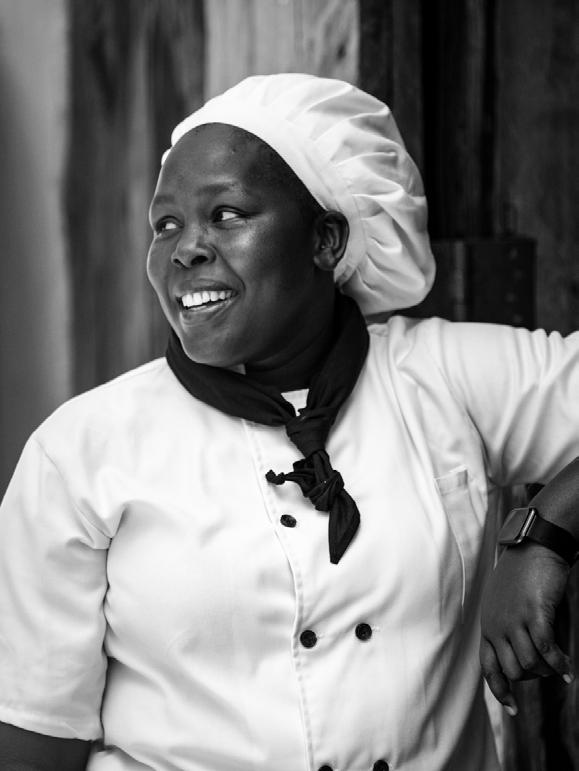
Your culinary experience at Segera is not complete until you explore their extensive collection of the continent’s finest wines, meticulously curated to complement the flavors of our exquisite cuisine. Whether you’re a seasoned connoisseur or just beginning your wine discovery, the pairings promise to tantalize your palate and leave you with unforgettable memories of Segera’s indulgent hospitality.
Segera’s amazing chefs curate engaging outdoor cooking classes, offering guests a delightful opportunity to learn the tricks and techniques behind preparing local cuisines. Held in the serene ambiance of the courtyard nursery, each class is a sensory journey. Beyond mastering recipes, these engaging outdoor sessions foster connections among guests, chefs, and the dedicated hosting teams, creating a vibrant community united by a love for exceptional food and unforgettable experiences.
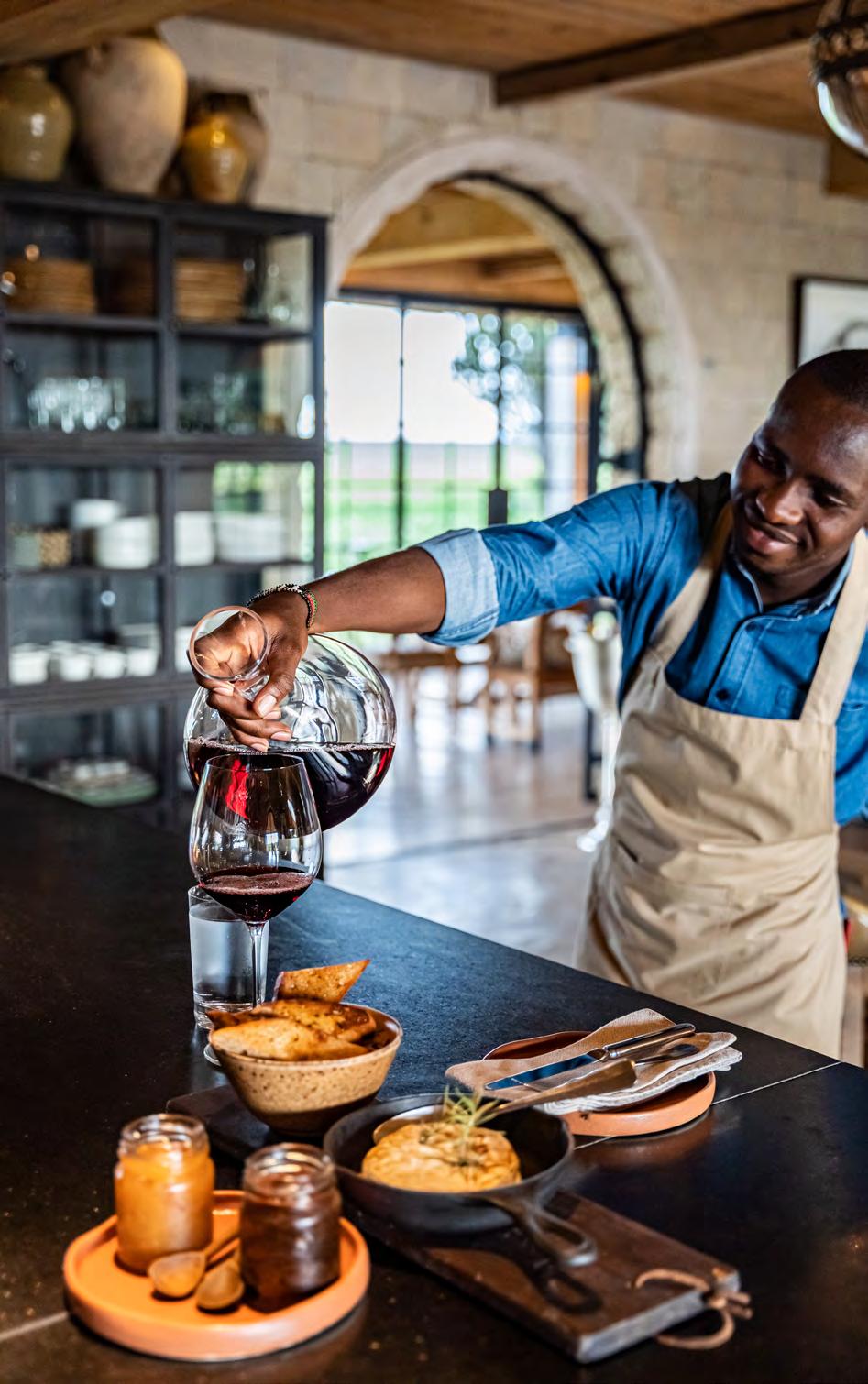
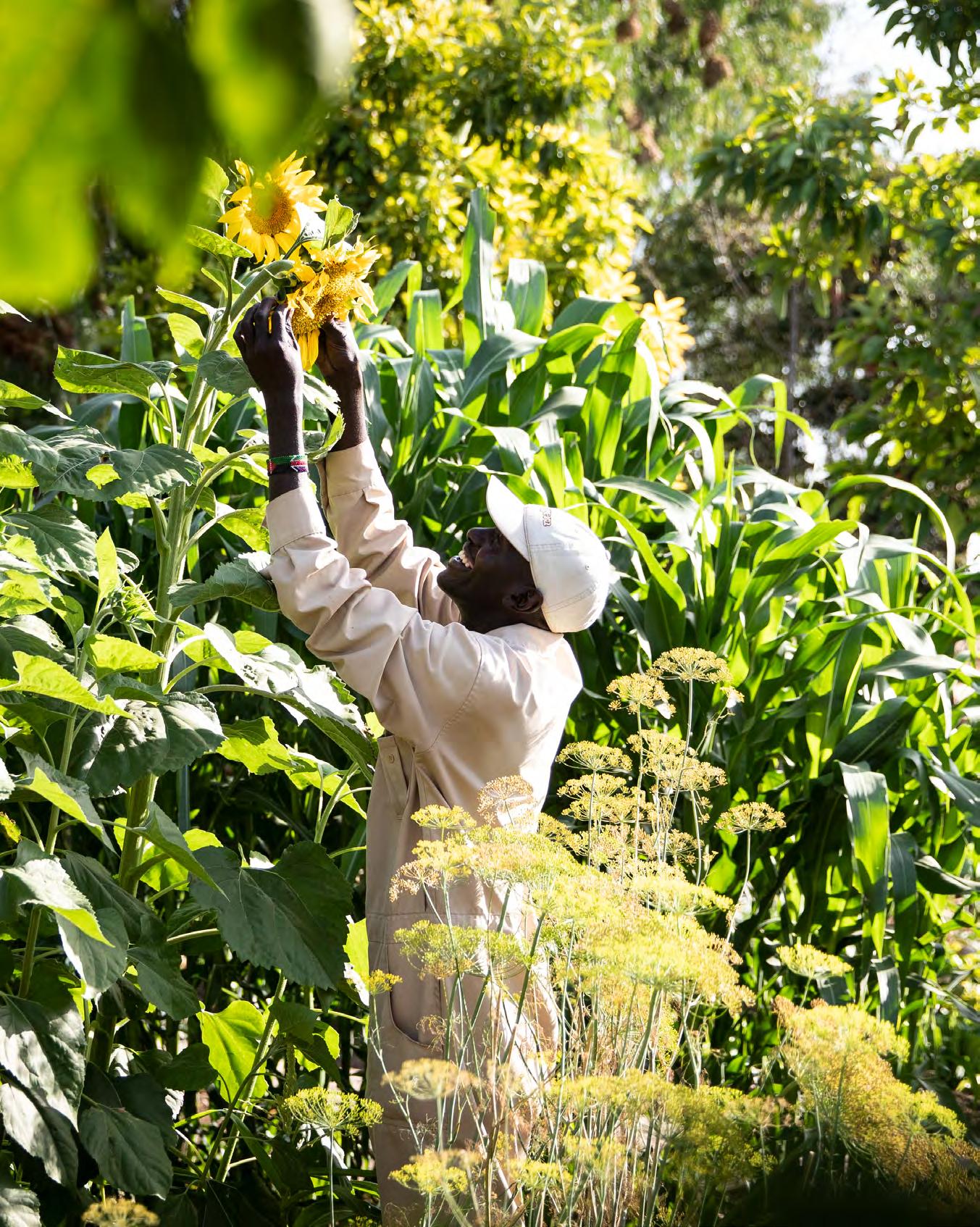
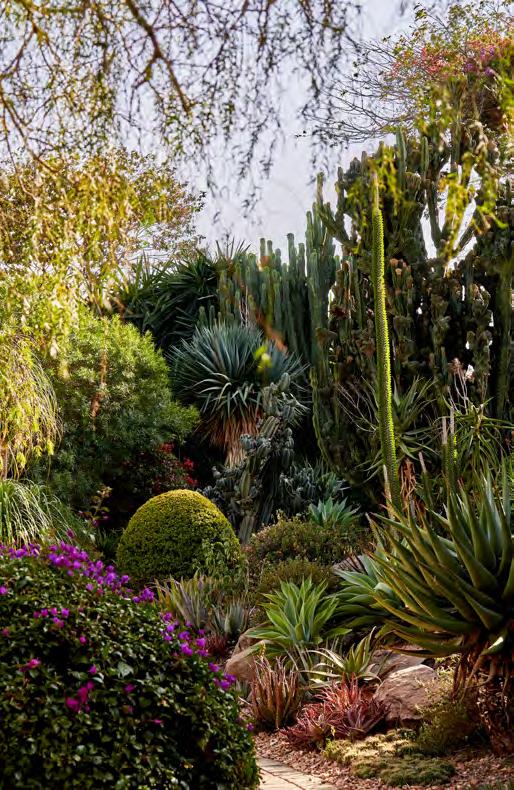

At the start of each day, when the first rays of sunlight embrace the arid foothills of Mount Kenya, Peter Loupe and his dedicated team of gardeners step into their sanctuary of green and blossom. His hands, seasoned with great devotion, birthed an oasis that whispers tales of resilience and beauty.
Once a desolate expanse, this land now stands as a haven, adorned with flourishing gardens that defiantly blossom against the formidable odds imposed by its arid past. Peter’s touch has transformed Segera into an oasis, a living testament to nature’s capacity to renew itself through skilled hands connected to the earth.
Peter prides himself on being the longest-serving member of the Segera team. Prior to joining Segera in 2009 as a gardener, Peter would frequent the ranch as a young boy to play football with friends during the holidays. He owes his knowledge and gardening skills to Madam Gisela, a landscaping designer who spearheaded Segera’s Gardening works between 2009 and 2014. She trained and later appointed Peter as the head gardener before she left.
Like a proud parent, Peter shares the story of each plant. He has witnessed every seedling sprout into a triumph of bulbous succulents, towering palms, and fruit-laden trees. “Everything came from hands,” says Kofi. It took 18 gardeners to landscape seven acres, aided by 150 women from the local community. Together, they spent three years planting everything by hand. Much thought was given to not only the type of plant but also the location of planting each seedling. This would ensure they have enough space to flourish in years to come. Peter explains that the majority of the plants in the garden do not require lots of water, which works perfectly with Laikipia’s climate.
Every significant moment in Segera has been commemorated by a tree. Peter would plant a tree in honor of the people of Segera (without their knowledge). As he walks through the garden, he gestures toward these trees. Each one tells a story—of special visits, birthdays, and incredible milestones within the larger Segera family. “To people, these
are just trees. To me, these are lasting memories intertwined in roots and branches,” adds Peter. Like living scrapbooks, these trees capture the shared moments and stories of Segera.
Over the years, Peter’s gardening team has left a lasting mark. Many staff members across different departments began their journey right here on Segera as gardeners. “The discipline and patience nurtured in gardening cultivate excellent skills applicable in all aspects of life,” asserts Peter. The garden, it seems, not only grows plants but also the qualities that blossom into valuable skills for individuals across diverse endeavors.
Peter’s botanical expertise runs deep, delving into the profound intricacies of flora. He expansively explains the medicinal value of almost every plant growing in the garden. Constantly enriching his gardening acumen through books and online resources, he remains devoted to expanding his knowledge. With an experimental spirit, he meticulously observes which plants thrive best in the environment. His explanations of each plant are candid and thorough, encompassing its name, distinctive features, medicinal attributes, and the precise moment it took root in the garden.
Nestled just a few minutes away from the enchanting botanical gardens is a hidden gem—a picturesque orchard adjacent to the staff village. In this quaint garden, a harmonious blend of fruit trees and vegetables thrives under Peter’s expert care. Positioned discreetly at the corner is a substantial compost pit diligently turned to produce nutrient-rich manure. This organic elixir is a culmination of waste from both the staff and guest kitchens, illustrating Segera’s commitment to sustainability. Not content with conventional methods, Peter is currently engrossed in a fascinating experiment involving a miniature wormery project. As a staunch advocate of permaculture, he embraces the philosophy wholeheartedly, embodying its principles in his daily cultivation endeavors.
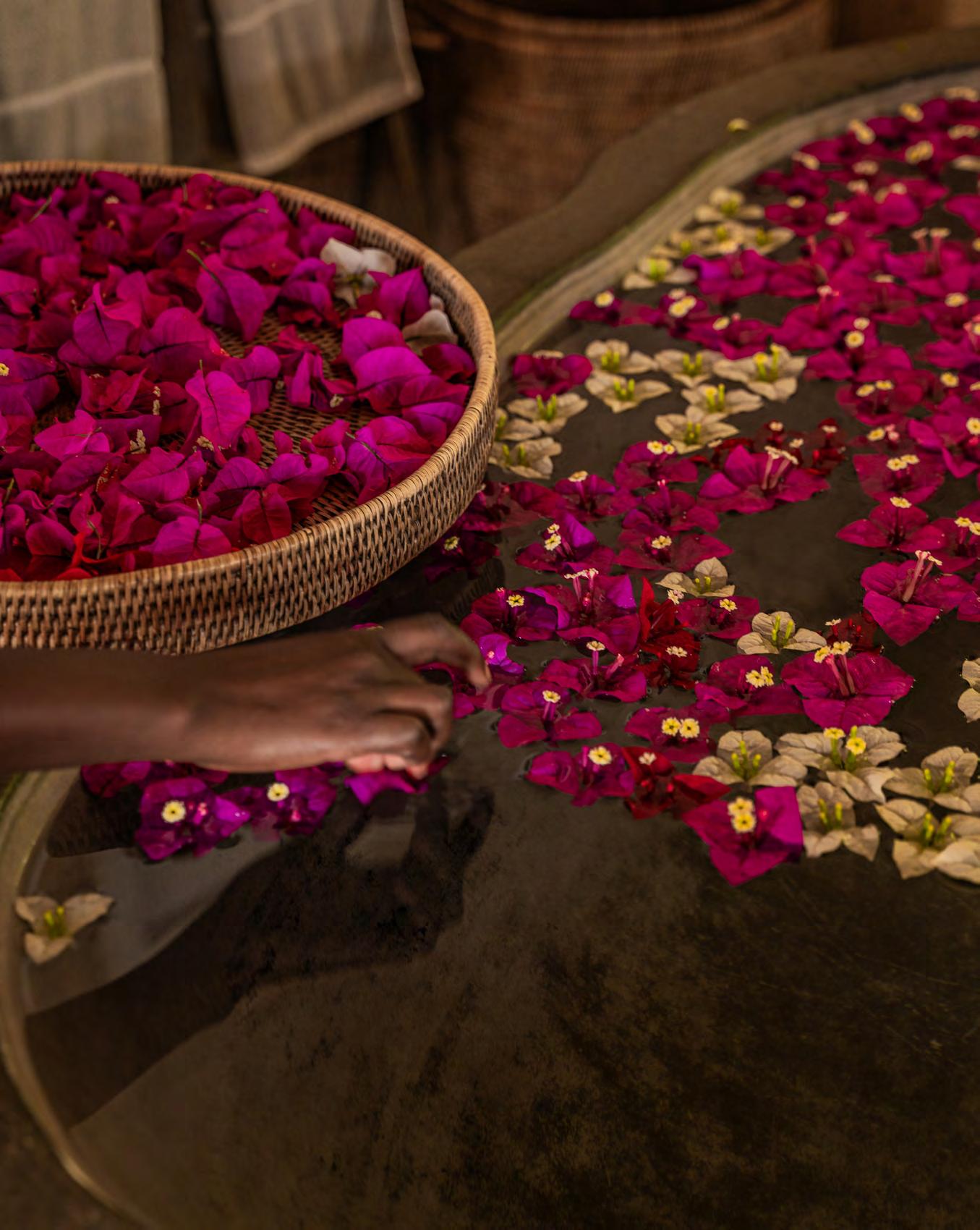
Segera’s commitment to well-being is integral to providing guests with a rejuvenating safari experience. At the spa, experienced therapists offer soothing and holistic wellness treatments, creating an environment for unwinding and restoring a sense of peace, balance, and overall well-being. Among these offerings is the solar-powered Rasul tower, which adds an eco-friendly touch to your relaxation journey.
For fitness enthusiasts on the safari adventure, the cutting-edge wellness center offers a state-of-the-art gym, ensuring guests can maintain their active lifestyle and stay energized throughout their stay.
Additionally, guests seeking a comprehensive approach to enhancing physical and mental health can enjoy tailored private yoga sessions led by the resident yogi. These sessions not only provide a unique opportunity to reconnect with nature but also allow you to rejuvenate your spirit through meditative poses.
Guests are encouraged to embrace the tranquility and beauty of the wilderness, finding moments of unwinding and renewal amidst the untamed surroundings. At Segera, your well-being is at the heart of the safari experience.
Why should somebody consider trying yoga at all?
Yoga is a series of poses and stretches that anyone can try out. It’s also an amazing form of self-care. Yoga is a great way to unite your body, mind, and soul, which in turn allows us to tap into pure consciousness. Yoga is a wonderful way to work out and connect with your inner self. This builds strength in both the body and the mind.
What is your favourite yoga style/ Pose?
Vinyasa yoga or flow is one I love because it encompasses various inversions such as head stands, hand stands, etc. I enjoy being upside down. This feeling allows me to let go of whatever is weighing me down.
How has yoga influenced your perspective on life, and how do you bring yogic principles into your interactions with others?
I find it easier to control stress with awareness and letting go of things mentally with love. I am able to achieve this by meditating at least three days a week. In addition to conducting yoga classes, I practice yoga at least thrice a week to maintain physical fitness. Breathwork exercises help bring awareness inward and deeper relaxation of the mind and soul. When I am connected to myself I can connect with others too. Regular meditation also helps me communicate and share feelings with others.
How do you incorporate mindfulness into your daily routine, both on and off the mat?
Whenever I wake up, before going to bed, or whenever I am walking around, I incorporate conscious breathing. I
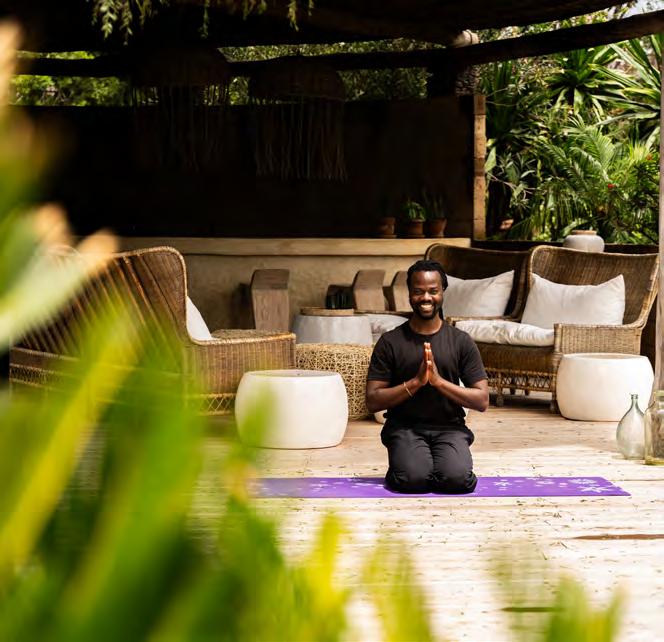
also like to set intentions for the day before I go about my daily routine and be deliberate about practicing kindness at all times.
Are there any misconceptions about yoga that you’d like to address or clarify?
Many say that yoga is hard, meant for flexible bodies, or that it is meant for women. However, anyone can get into yoga, irrespective of age or gender as it gives us all healthy well-being, good sleep, and more happiness. Do yoga, your spine will thank you later. Namaste!

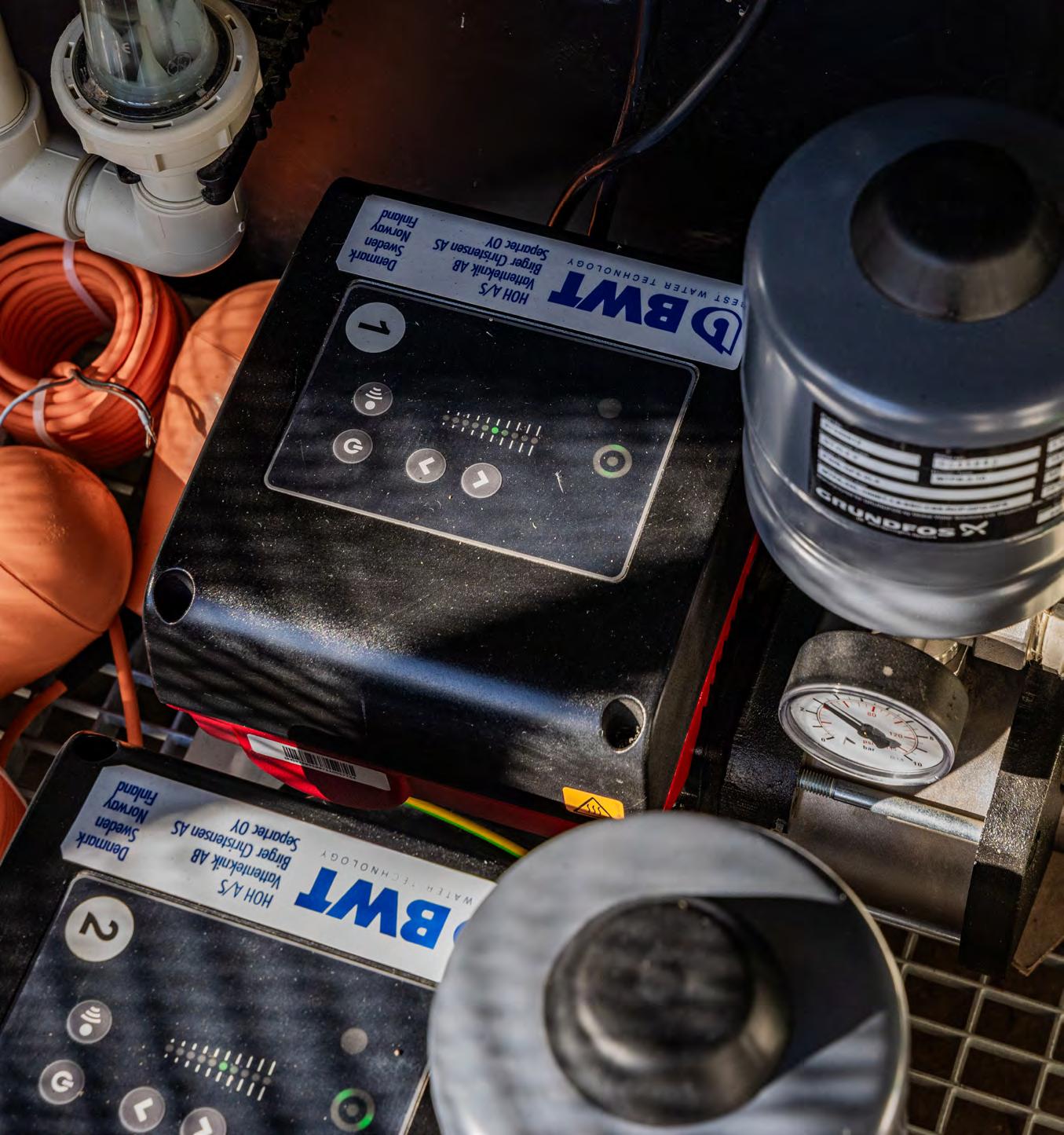
Segera has proudly earned the distinction of being East Africa’s first BWT ‘Pink Point Destination’. BWT’s cutting-edge filtration technology improves not only guest experiences but also enhances operational efficiency throughout Segera’s tourism industry.
Thanks to the strategic collaboration with BWT, Segera ensures the highest quality of water throughout its facilities, benefiting both guests and employees. Water quality is of crucial importance in the hospitality industry, affecting everything from the taste of beverages to culinary results. BWT’s innovative approach ensures optimum water quality with every sip and every bite. As the saying goes, especially in the kitchen, if the water is right, so is the result.
BWT prioritizes sustainability by using eco-friendly methods and efficient water treatment processes that reduce environmental impacts while maintaining high quality results.
efficiency and significantly reduce the amount of wastewater produced. In addition, many BWT filters are recyclable, and over single-use plastics.
With a focus on innovation, sustainability, and water optimization, BWT emerges as a leader in comprehensive water treatment solutions, setting the standard for excellence in residential, commercial, and industrial applications.
We’ve also partnered with AQUA Pearls For You and Planet Blue, a private, charitable, non-profit foundation of BWT, to support important conservation initiatives of the ZEITZ foundation, such as land restoration and the preservation of vital wildlife habitats. In this regard, the AQUA Pearls For You and Planet Blue foundation has supported the planting of 300,000 tree seedlings for the Tree of Life Reforestation Project and the construction of a large water dam to support the initiative as well as wildlife conservation. Their commitment aligns seamlessly with our shared vision for a sustainable future.
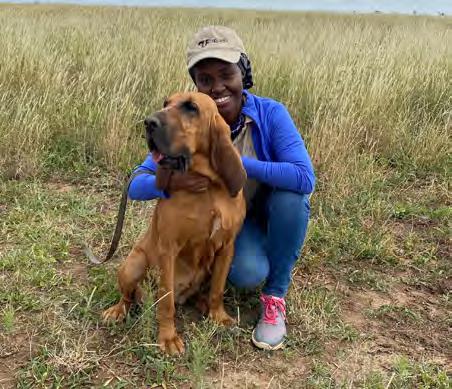 Faith Kanja
Faith Kanja
Editor & In-house contributor
Faith is a skilled communicator and social media expert dedicated to the causes of Segera and the ZEITZ foundation. With a passion for storytelling, Faith weaves narratives that captivate and inspire.
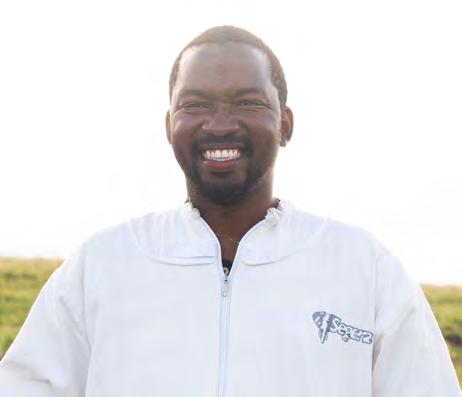
Brian Siambi
Design, layout and photography
Brian is a storyteller through the lens, documenting travel stories across Africa. Published in Conde Nast traveller and trainer for National Geotgraphic masterclass, He is a firm believer that we’re incharge of telling our stories in an authentic way. Brian and Joe came up with the idea to document all the Long Run members in Kenya and publish them to be shared with like minded individuals all over the world.

Joe Wahome
Contributor
Joe is a writer and connector of people and brands with a bias to his home, Laikipia. With the world turned on its head due to the global pandemic, The Long Run Magazine was the perfect place to tell stories about the organization’s Kenyan members, their connection to the communities, landscape and their 4Cs journey.


All members of The Long Run strive to become recognised as Global Ecosphere Retreats (GER)®. The GER® standard is one of the most rigorous sustainability standards in the tourism industry. This standard was granted recognition by the Global Sustainable Tourism Council in 2015, and is only awarded to organisations that demonstrate a holistic balance of the ‘4Cs, excel in conserving nature and improve the wellbeing of the communities they belong to.
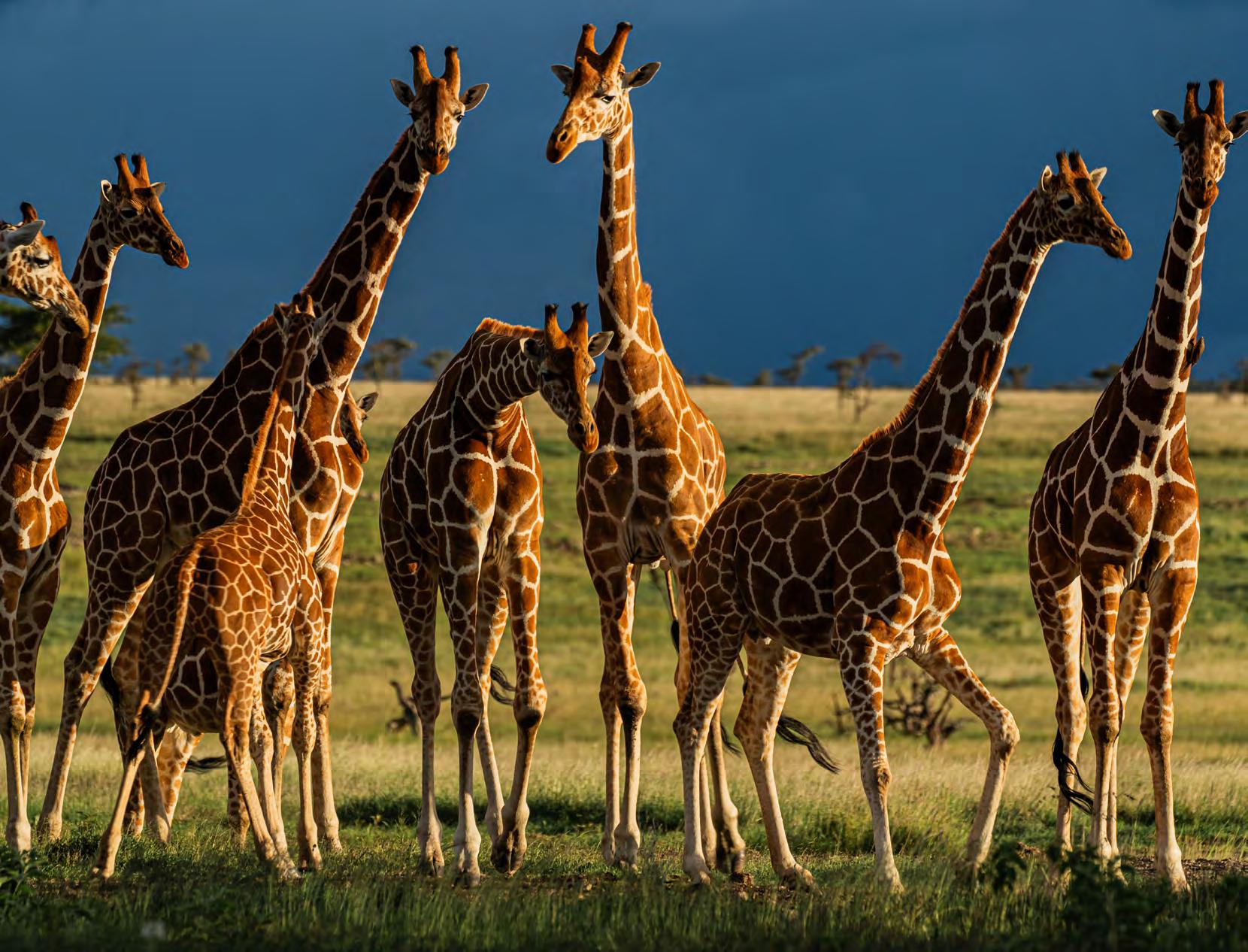

Thank you to the Long Run members





